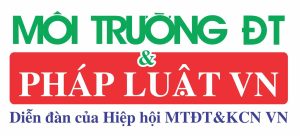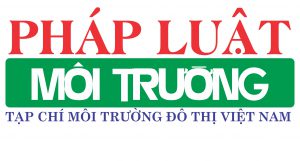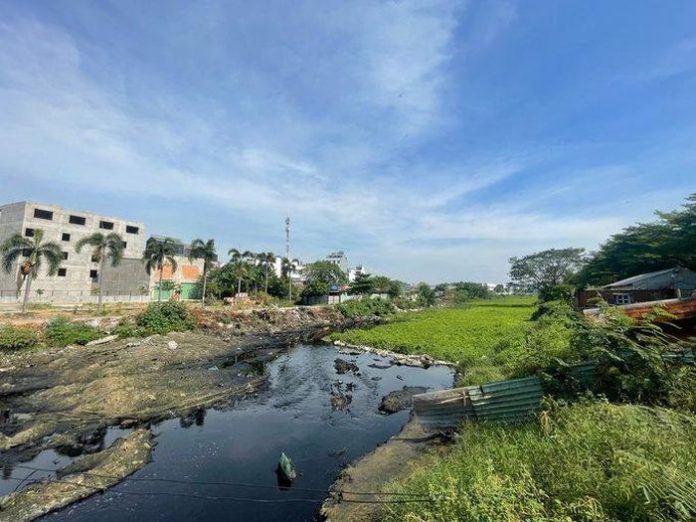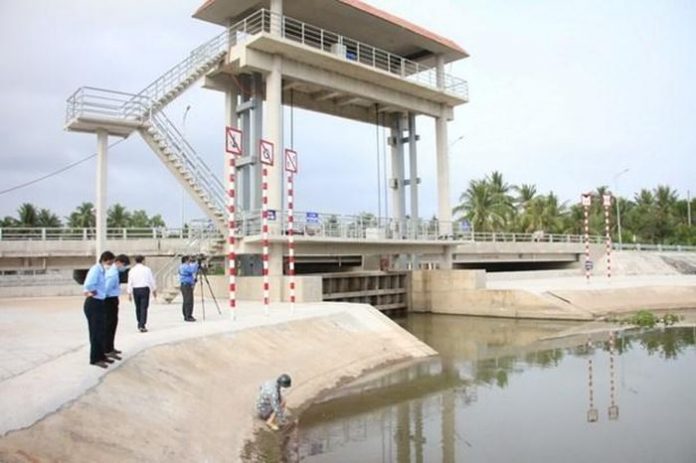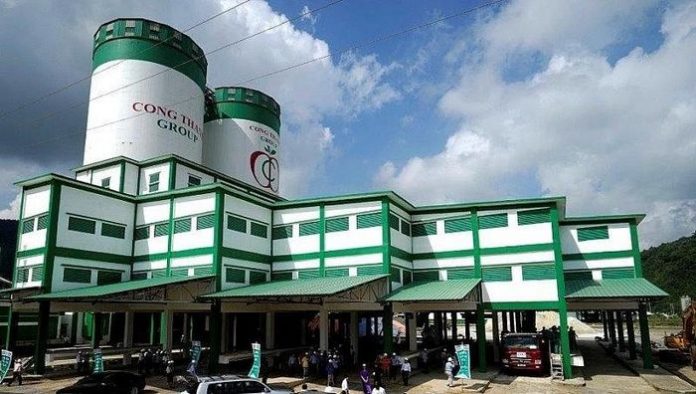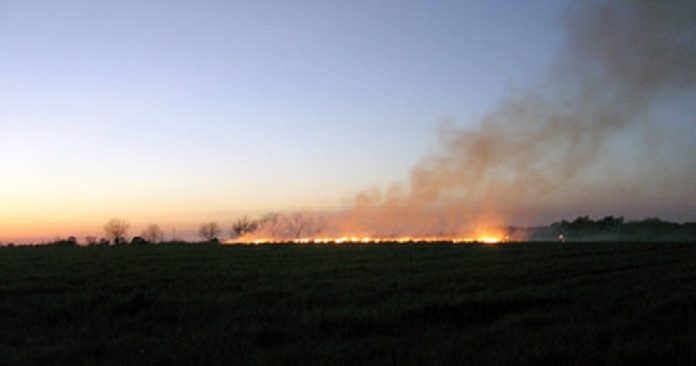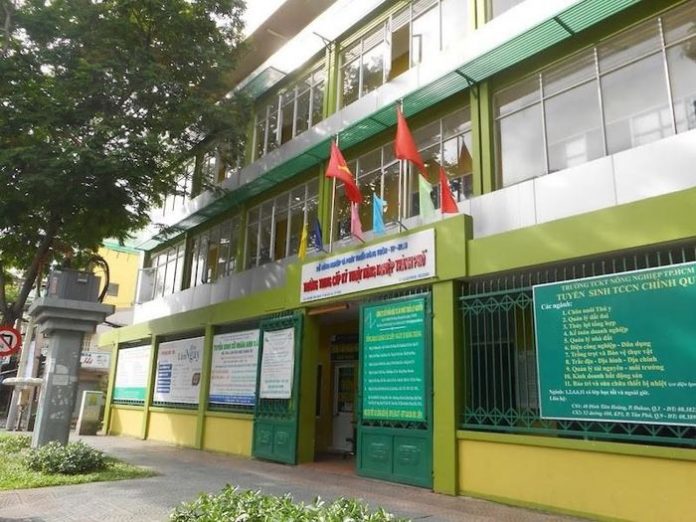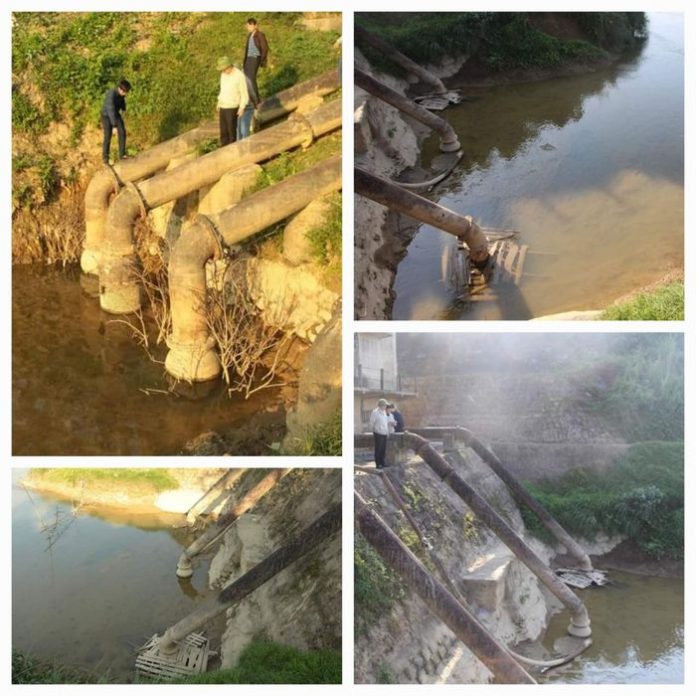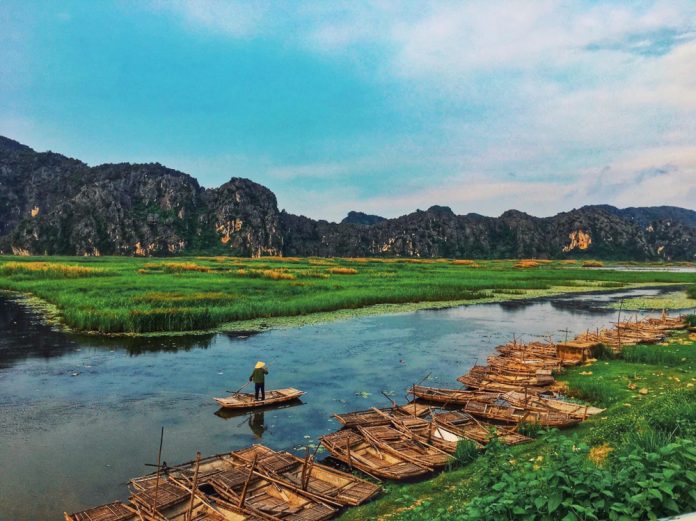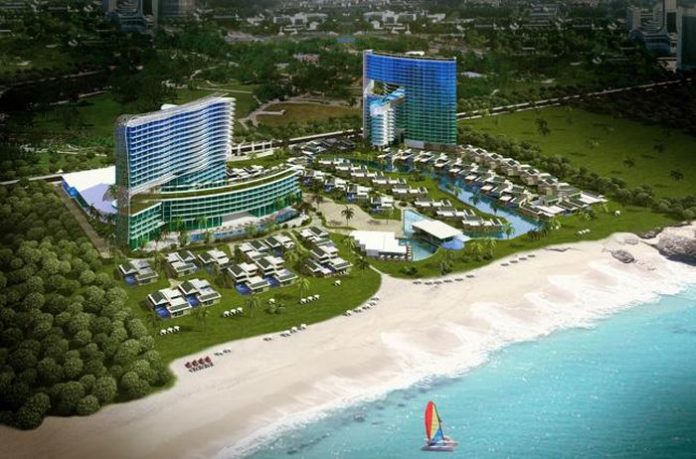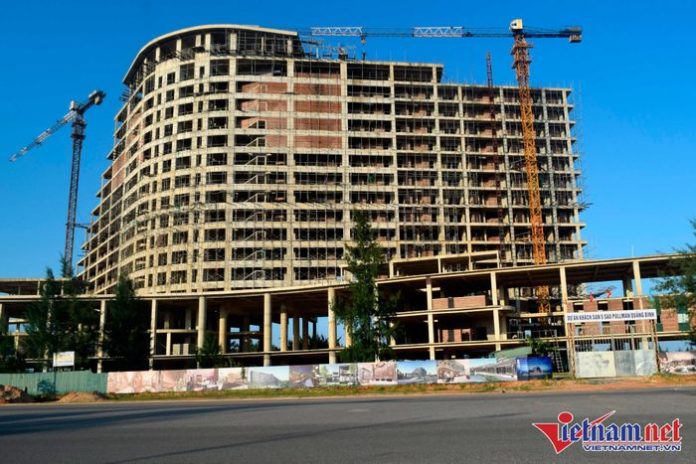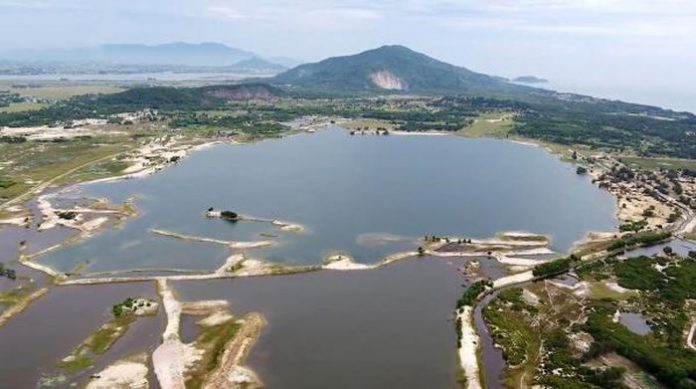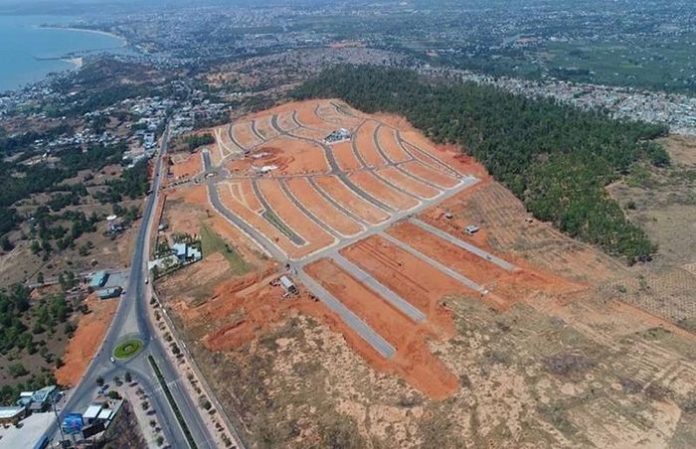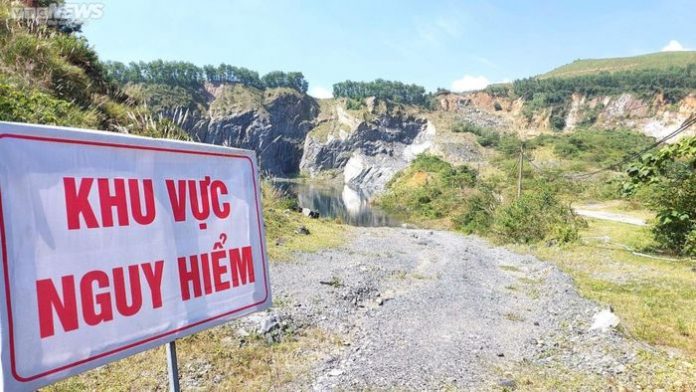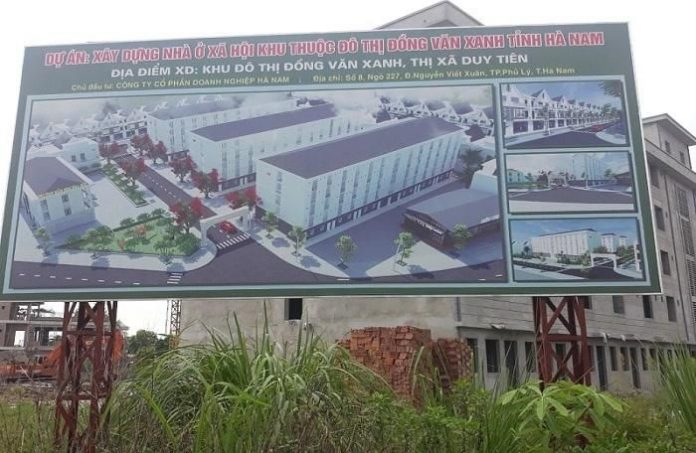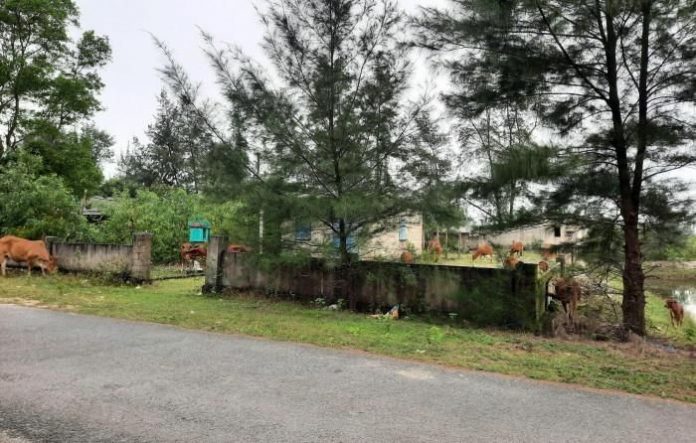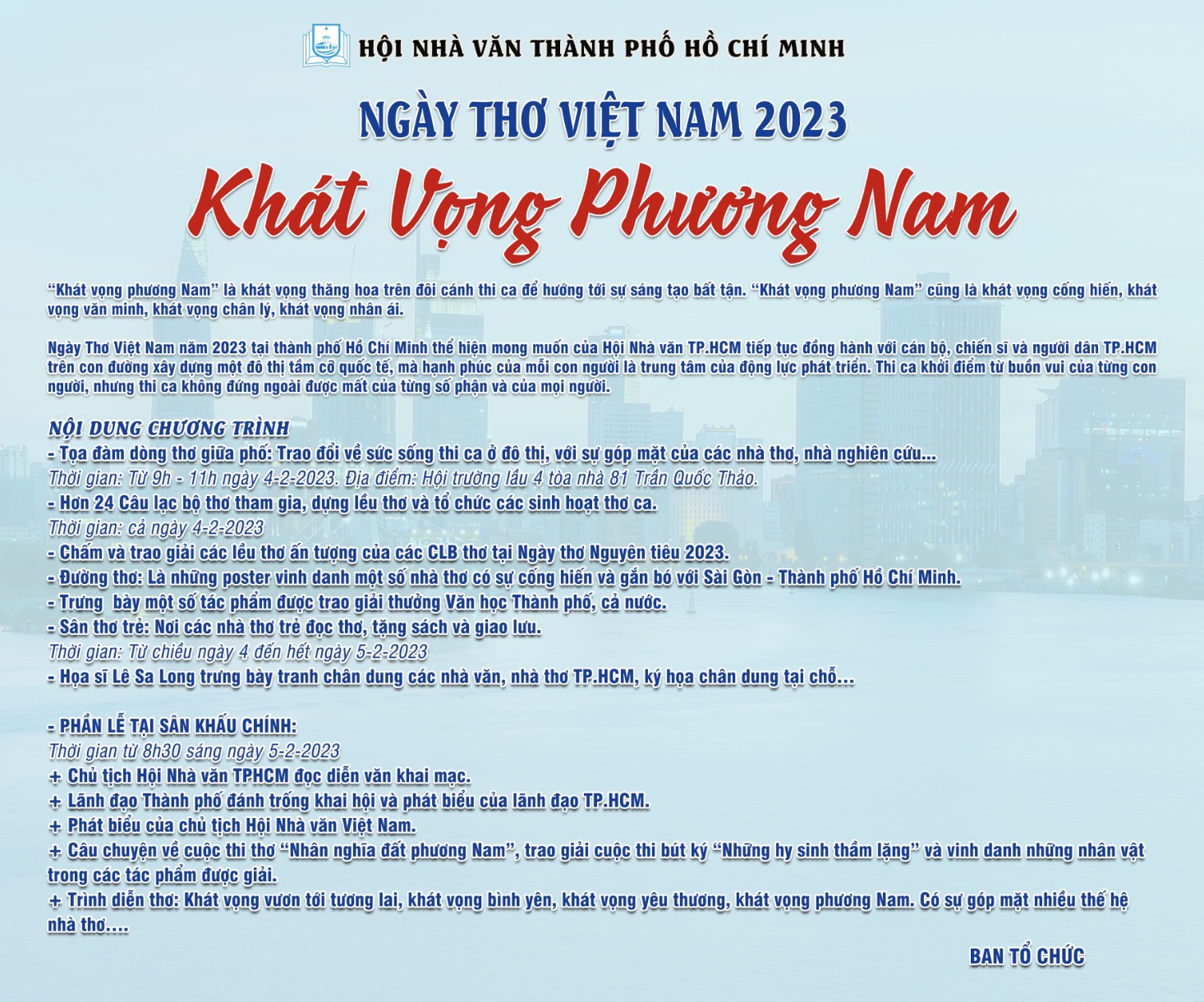Trân trọng giới thiệu tới quý độc giả Công bố quốc tế lĩnh vực môi trường số 04-2023 với những nội dung chính như sau:
Về quản lý môi trường
– Tiến bộ công nghệ sinh học đối với nước, thực phẩm và chăm sóc sức khỏe y tế: Đánh giá
– Can thiệp vật liệu nano dựa trên carbon và loại bỏ hiệu quả các chất gây ô nhiễm khác nhau khỏi nước thải – Đánh giá
– Định lượng bồi thường sinh thái của các giải pháp thay thế quản lý chất thải thực phẩm bền vững dựa trên đánh giá chi phí-lợi ích vòng đời kinh tế và môi trường
– Quản lý chuỗi cung ứng xây dựng: Đánh giá tài liệu có hệ thống và phát triển trong tương lai
– Tải lượng nitơ trong dòng chảy bề mặt đô thị từ một thành phố lớn, vùng lạnh giá ở Bắc Mỹ năm 1991–2021
– Làm thế nào để ô nhiễm không khí đô thị ảnh hưởng đến hoạt động môi trường của công ty?
– Xu hướng tạm thời về nguy cơ phơi nhiễm bisphenol A, benzophenone-3 và triclosan ở trẻ em và thanh thiếu niên Hoa Kỳ từ 6–19 tuổi: Kết quả từ Khảo sát Kiểm tra Sức khỏe và Dinh dưỡng Quốc gia 2005–2016
– Hạn hán và chất lượng không khí ôzôn ở California: Xác định các khu vực dễ bị ảnh hưởng để chuẩn bị cho hạn hán trong tương lai
– Vai trò của hạt vật chất 2,5 (PM2,5) đối với trọng lượng dư thừa là gì? Một nghiên cứu cắt ngang ở thanh niên Tây Ban Nha từ 2─14 tuổi
– Tiếp xúc sớm với ô nhiễm không khí ngoài trời và các yếu tố môi trường trong nhà đối với sự phát triển của bệnh dị ứng ở trẻ em từ các triệu chứng ban đầu đến bệnh tật
Về môi trường đô thị
– Tổng hợp zeolit Nasingle bondP1 chất lượng cao từ tro bay đốt chất thải rắn đô thị bằng phương pháp thủy nhiệt có hỗ trợ vi sóng và khả năng hấp phụ của nó
– Sự xuất hiện không gian-thời gian của các chất gây ô nhiễm đáng lo ngại mới nổi ở các con sông đô thị ở miền nam Brazil
– Đánh giá lượng phát thải nitơ do con người tạo ra vào nước bằng cách sử dụng phương pháp kết hợp trong cụm thành phố: Hiểu biết sâu sắc về quá trình tiến hóa lịch sử, quy kết và tiềm năng giảm thiểu
– Hiệu quả của các chỉ số sinh vật đáy để đánh giá chất lượng sinh thái và ảnh hưởng đô thị hóa đến hệ sinh thái bãi cát
– Làm sạch nhiệt lớp phủ sơn để thu hồi chất thải rắn đô thị silicat và phân tích cơ chế phân ly lớp phủ
– Sản xuất và xác định đặc tính của cốt liệu nhẹ từ tro bay đốt chất thải rắn đô thị thông qua quy trình tạo hạt một bước và hai bước
– Phân tích tỷ lệ tử vong do tim mạch liên quan đến nóng và lạnh trong môi trường đô thị Địa Trung Hải thông qua các chỉ số nhiệt khác nhau
– Vai trò của mức độ xanh trong khu dân cư, loại đất phủ xanh và sự đa dạng đối với tình trạng thừa cân/béo phì ở người lớn tuổi: Một nghiên cứu thuần tập
– Kết hợp quá trình bùn hoạt tính tốc độ cao với quá trình bùn hạt hiếu khí để xử lý nước thải đô thị bền vững
Về môi trường khu công nghiệp
– Xây dựng cấu trúc dị thể g-C3N4/TiO2 theo sơ đồ Z để thúc đẩy quá trình phân hủy chất ô nhiễm thuốc nhuộm nguy hại
– Điều gì thúc đẩy sự thay đổi trong hiệu quả mở khóa carbon công nghiệp cấp tỉnh của Trung Quốc? Bằng chứng từ một mô hình hồi quy có trọng số theo thời gian và địa lý
– Sự tích tụ của ngành năng lượng mới và hiệu quả đổi mới xanh: Sự không phù hợp về không gian của các nguồn tài nguyên R&D có quan trọng không?
– Các mô hình phát thải chất ô nhiễm thể hiện dọc theo chuỗi công nghiệp nhẹ toàn cầu: Một viễn cảnh mạng lưới phức hợp
– Đánh giá toàn diện về các phương pháp học máy để lập mô hình quy trình loại bỏ thuốc nhuộm trong nước thải
– Loại bỏ các ion chì khỏi nước thải bằng cách sử dụng các hạt nano magiê sunfua trong lồng vi hạt alginate
– Các hạt nano ZnO được chiết xuất từ lá Bryophyllum pinnatum có tiềm năng phi thường đối với sự phân hủy xúc tác quang của năng lượng mặt trời đối với các chất gây ô nhiễm công nghiệp
– Phân hủy thay đổi phát thải CO2 trong sản xuất: Phân tích phân hủy theo lý thuyết sản xuất được cải thiện dựa trên lý thuyết liên kết công nghiệp
– Phương pháp môi trường mới để tăng cường phân hủy sinh học nước thải bị ô nhiễm thông qua các hạt nano cố định trên một chủng vi khuẩn dệt may công nghiệp được phân lập mới
– Cung cấp thuế bởi các công ty con quốc tế của các công ty đa quốc gia trong ngành công nghiệp khai thác Ấn Độ: Ô nhiễm môi trường và tham nhũng có quan trọng không?
Xin trân trọng giới thiệu!
QUẢN LÝ MÔI TRƯỜNG
1. Biotechnological advancements towards water, food and medical healthcare: A review
Chemosphere, Volume 312, Part 1, January 2023, 137185
Abstract
The global health status is highly affected by the growing pace of urbanization, new lifestyles, climate changes, and resource exploitation. Modern technologies pave a promising way to deal with severe concerns toward sustainable development. Herein, we provided a comprehensive review of some popular biotechnological advancements regarding the progress achieved in water, food, and medicine, as the most substantial fields related to public health. The emergence of novel organic/inorganic materials has brought about significant improvement in conventional water treatment techniques, anti-fouling approaches, anti-microbial agents, food processing, biosensors, drug delivery systems, and implants. Particularly, a growing interest has been devoted to nanomaterials and their application for developing novel structures or improving the characteristics of standard components. Also, bioinspired materials have been widely used to improve the performance, efficiency, accuracy, stability, safety, and cost-effectiveness of traditional systems. On the other side, the fabrication of innovative devices for precisely monitoring and managing various ecosystem and human health issues is of great importance. Above all, exceptional advancements in designing ion-selective electrodes (ISEs), microelectromechanical systems (MEMs), and implantable medical devices have altered the future landscape of environmental and biomedical research. This review paper aimed to shed light on the wide-ranging materials and devices that have been developed for health applications and mainly focused on the impact of nanotechnology in this field.
2. Carbon-based nanomaterial intervention and efficient removal of various contaminants from effluents – A review
Chemosphere, Volume 312, Part 1, January 2023, 137319
Abstract
Water treatment is a worldwide issue. This review aims to present current problems and future challenges in water treatments with the existing methodologies. Carbon nanotube production, characterization, and prospective uses have been the subject of considerable and rigorous research around the world. They have a large number of technical uses because of their distinct physical characteristics. Various catalyst materials are used to make carbon nanotubes. This review’s primary focus is on integrated and single-treatment technologies for all kinds of drinking water resources, including ground and surface water. Inorganic non-metallic matter, heavy metals, natural organic matter, endocrine-disrupting chemicals, disinfection by-products and microbiological pollutants are among the contaminants that these treatment systems can remediate in polluted drinking water resources. Significant advances in the antibacterial and adsorption capabilities of carbon-based nanomaterials have opened up new options for excluding organic/inorganic and biological contaminants from drinking water in recent years. The advancements in multifunctional nanocomposites synthesis pave the possibility for their use in enhanced wastewater purification system design. The adsorptive and antibacterial characteristics of six main kinds of carbon nanomaterials are single-walled carbon nanotubes, multi-walled carbon nanotubes, graphene, graphene oxide, fullerene and single-walled carbon nanohorns. This review potentially addressed the essential metallic and polymeric nanocomposites, are described and compared. Barriers to use these nanoparticles in long-term water treatment are also discussed.
3. Eco-compensation quantification of sustainable food waste management alternatives based on economic and environmental life cycle cost-benefit assessment
Journal of Cleaner Production, Volume 382, 1 January 2023, 135289
Abstract
Eco-compensation can promote sustainable food waste management alternatives. However, a comprehensive quantification method is not yet available. This study proposed a method to quantify the eco-compensation for food waste management through environmental and economic life cycle cost-benefit analysis. This method was tested with four food waste management alternatives in Suzhou, China, including Biological Drying + Aerobic Composting (BDAC), Anaerobic Fermentation (AF), Anaerobic Fermentation + Digestate Composting (AFDC), and INcineration (IN). According to the method, the environmental benefits (net positive externalities) and the economic loss (net negative internalities) could provide references to the government and the food waste producers (polluters), respectively, as eco-compensations for food waste disposal plants. The results suggest that AFDC (with higher energy and material recovery level) was the most environmentally and economically viable food waste management alternative. The AFDC exhibited the highest net environmental benefits (CNY t−1) of 844, followed by BDAC (596), IN (449), and AF (356). The net economic profit (CNY t−1) without subsidy of AFDC (55) was the highest, followed by IN (−5), AF (−27), and BDAC (−422). The total values of eco-compensations by the government and the polluters were 564, 101, 0, and 57 CNY t−1 for BDAC, AF, AFDC, and IN, respectively. The proposed methods for food waste disposal management can promote the effective and efficient use of government funds for the sustainable development of the food waste management sector.
4. Digitalization and environmental performance: An empirical analysis of Chinese textile and apparel industry
Journal of Cleaner Production, Volume 382, 1 January 2023, 135338
Abstract
Although digitalization has attracted much attention in research and practice, the implications of firm digitalization for environmental performance are still unclear. Building on the knowledge management perspective, this study focuses on the Chinese traditional high-polluting textile and apparel industry and aims to empirically explore the effects of firm digitalization on environmental performance. We collected secondary data from 553 firm-year observations of 74 listed Chinese textile and apparel firms from the CSMAR database. By panel data analysis, the results highlight a U-shaped relationship between firm digitalization and environmental performance, and strong technical background, financial background and high education levels of the top management team (TMT) positively moderate the relationship. This study contributes to the literature on the digitalization-environmental performance relationship, breaks new ground by focusing on textile and apparel listed firms, and has implications for managers in optimising the TMT structure to increase the returns from digitalization endeavours.
5. Construction supply chain management: A systematic literature review and future development
Journal of Cleaner Production, Volume 382, 1 January 2023, 135230
Abstract
The dilemmas of resource waste and information dispersion in the construction industry can be attributed to scattered management mode. Primary project participants tend to emphasize their own production operations and benefits. Problems such as overcapacity, untimely procurement and supply of materials and equipment, unreliable transportation, and information distortion occur frequently. In response to the urgent need of enhanced construction industrialization, construction supply chain (CSC) management provides a solution by coordinating production and resources, collaborating all primary parties in construction activities, and integrating construction information. However, lack of comprehensive review of CSC research hinders clarifications of research directions and implementation priorities for CSC management. This paper aims to combine quantitative and qualitative methods to systematically analyze CSC related studies to bridge this gap. The quantitative analysis of 465 relevant articles found that CSC resilience plays an important role in ensuring CSC stability in uncertain environment but receives insufficient attention. Thus, from the perspective of CSC resilience development, 38 articles focusing on CSC were qualitatively analyzed and a framework for achieving CSC resilience from dimensions of organization, management, and technology was established. Further guided framework suggested that future research on CSC should focus on interaction of participants across CSC lifecycle, information integration, objective CSC resilience measurement, and CSC digitization with new technologies. The CSC resilience achieving framework, limitations and challenges of CSC management, and future research directions underlined in this study can provide guidance for future academic work and practical application of CSC management.
6. Nitrogen loads in urban surface runoff from a major, cold-region North American city in 1991–2021
Journal of Cleaner Production, Volume 382, 1 January 2023, 135411
Abstract
Long-term monitoring of pollutant loads in urban surface runoff is important but uncommon. In this study, we examined nitrogen loads in stormwater and snowmelt runoff from four urban catchments of a major, cold-region North American city over the past 31 years (1991–2021). Temporal variability of total organic nitrogen (TON), nitrate and nitrite nitrogen (NOx-N), total ammonia nitrogen (TAN), and total nitrogen (TN) were similar in the four catchments, which had an increasing trend from 1992 (TN: 1.3–3.4 kg/ha/year) to 2006–2011 (TN: 5.5–19.3 kg/ha/year) and a decreasing trend afterward. Trends and change points in the four urban catchments were influenced by storm/snowmelt events, land use, urban drainage infrastructure issues, and stormwater management facilities. The maximum monthly fluctuation occurred in March/April and July due to high variations of snowmelt and storm events. The ratios of monthly loads during the storm season (April to October) to the snow season (November to March) for TON, NOx-N, and TN were 1.31, 1.12, and 1.15, respectively; whereas it was 0.95 for TAN. TKN, TAN, and TN event mean concentrations (EMCs) in snowmelt were higher (18.0%, 94.0%, and 10.8%, respectively) than those in stormwater. However, the NOx-N EMC in snowmelt was lower (9.3%) than in stormwater.
7. How does urban air pollution affect corporate environmental performance?
Journal of Cleaner Production, Volume 383, 10 January 2023, 135443
Abstract
Prior studies have suggested that urban air pollution pushes firms to increase their corporate environmental performance (CEP) as a response to stakeholder pressures. However, we challenge the assumption that stakeholders generally recognize and punish firms’ environment-damaging behavior. Instead, we draw on the Broken Windows Theory of urban decline and hypothesize that increasing urban air pollution is likely to result in lower CEP. We also theorize on how some city characteristics can moderate our baseline hypothesis. Specially, we hypothesize that firms in more developed cities and in larger cities tend to increase their CEP as urban air pollution increases. We test our hypotheses using panel data analysis that includes 573 firms in 74 cities of 29 countries worldwide. Overall, we find that urban air pollution strongly and significantly reduces CEP.
8. Temporal trends in risk of bisphenol A, benzophenone-3 and triclosan exposure among U.S. children and adolescents aged 6–19 years: Findings from the National Health and Nutrition Examination Survey 2005–2016
Environmental Research, Volume 216, Part 1, 1 January 2023, 114474
Abstract
Background
Phenolic compounds with potential adverse health effects are gradually being replaced. Little is known about the potential health risks of BPA, BP3, and TCS exposure in children and adolescents aged 6–19 years in the United States.
Objectives
To determine trends and rates of change in hazard indices (HI) for three phenolics in U.S. children and adolescents for BPA, BP3, TCS, and to assess changes in gender, race/ethnicity, age, and potential health risks.
Methods
Metabolic biomonitoring data from field-collected urine samples from the National Health and Nutrition Examination Survey (NHANES) were utilized. Daily intake of three phenols (bisphenol A, benzophenone-3, and triclosan) between 2005 and 2016 in children and adolescents were obtained. Cumulative risk indicators, including hazard quotient (HQ), hazard index (HI), and maximum cumulative ratio (MCR), were used for the health risk assessment of the three phenols.
Results
During this period, the change in LSGM HI was −2.9% per cycle [95% Cl: (−3.7%, −2.2%)], and the percentage of participants with HI > 0.1 decreased from 15.6% to 10.5%. Children (6–11 years) had higher mean HI values than adolescents (12–19 years), while female had higher LSGM HI values than male. MCR values were generally low and negatively correlated with HI. However, the average value of MCR increased from 1.722 to 2.107 during this period.
Conclusion
Exposure to phenolics among U.S. children and adolescents has changed in recent decades. However, gaps in data limit the interpretation of trends but legislative activity and advocacy campaigns by nongovernmental organizations may play a role in changing trends. Moreover, there are growing concerns about the potential health risks associated with exposure to multiple phenols in children and adolescents.
9. Drought and ozone air quality in California: Identifying susceptible regions in the preparedness of future drought
Environmental Research, Volume 216, Part 1, 1 January 2023, 114461
Abstract
California experienced extreme and prolonged drought conditions during the early 2010s. To date, little is known regarding the influence of drought on air quality. Our study quantified site-specific associations between drought (defined by the Standardized Precipitation-Evapotranspiration Index; SPEI) and daily maximum 8-h ozone (O3) concentrations for California, USA, and then pooled these associations for the years 2009–2015. Overall, ambient O3 concentration was higher during droughts by 1.18 ppb (95% confidence interval (CI) = 1.00–1.36). The sensitivity of O3 to drought was greater during the warm season than during the cool season (1.73 ppb versus 0.79 ppb higher O3 during droughts) with substantial regional variation. In a pooled analysis with meteorological parameters as potential effect modifiers, the spatial heterogeneity of drought-O3 associations was explained strongly by average relative humidity for each season (71.9% (warm season) and 73.4% (cool season) of the drought-O3 associations explained), followed by the drought-related changes in relative humidity (47.6% (warm season)) and temperature (53.6% (cool season)). The pooled regression further identified regions susceptible for drought-related O3 increases as those with relatively low average relative humidity (10–25th percentiles or 44.3–47.3%) and larger drought-related decrease in relative humidity and increase in temperature. As the drought events are projected to occur with increased frequency and intensity in the era of climate change, the excess health burdens from O3 exposures attributed to the projected drought events need to be taken into account when allocating air quality and health resources. The impacts of O3 on health during droughts would confound the health burdens from the drought itself.
10. Characteristics of wintertime carbonaceous aerosols in two typical cities in Beijing-Tianjin-Hebei region, China: Insights from multiyear measurements
Environmental Research, Volume 216, Part 1, 1 January 2023, 114469
Abstract
In order to investigate the impact of “Blue Sky War” implemented during 2018–2020 on carbonaceous aerosols in Beijing-Tianjin-Hebei (BTH) region, China, fine particulate matter (PM2.5) samples were collected simultaneously in Tianjin and Handan in three consecutive winters from 2018 to 2020. Organic carbon (OC) and elemental carbon (EC) in PM2.5 were measured with the same thermal-optical methods and analysis protocols. Significant reductions in primary organic carbon (POC) and EC concentrations were observed both in Tianjin and Handan, with decreasing rates of 0.65 and 2.95 μg m−3 yr−1 for POC and 0.13 and 0.64 μg m−3 yr−1 for EC, respectively. The measured absorption coefficients of EC (babs, EC) also decreased year by year, with a decreasing rate of 1.82 and 6.16 Mm−1 yr−1 in Tianjin and Handan, respectively. The estimated secondary organic carbon (SOC) concentrations decreased first and then increased in both Tianjin and Handan, accounting for more than half of the total OC in winter of 2020–2021 and with increasing contributions especially in highly polluted days. SOC was recognized as one of key factors influencing EC light absorption. EC in the two cities was relatively more related to coal combustion and industrial sources. The reductions of primary carbonaceous components may be attributed to the air quality regulations targeting coal combustion and industrial sources emissions in BTH area. Potential source contribution function (PSCF) analysis results indicated that the major source areas of OC and EC in Tianjin were the southwest region of the sampling site, while the southeast areas for Handan. These findings demonstrated the effectiveness of air quality regulation in primary emissions in typical polluted cities in BTH region and highlighted the needs for further control and in-depth investigation of SOC formation along with implementation of air pollution control act in the future.
11. What is the role of particulate matter 2.5 (PM2.5) on excess weight? A cross-sectional study in young Spanish people aged 2─14 years
Environmental Research, Volume 216, Part 2, 1 January 2023, 114561
Abstract
Purpose
To assess the relationship between particulate matter 2.5 (PM2.5) levels and the prevalence of excess weight in a representative sample of Spanish young people aged 2─14 years.
Methods
This was an ecological cross-sectional study using data from the 2017 wave of the Encuesta Nacional de Salud Española (ENSE), a nationally representative survey of the Spanish young and adult population. The final sample included 4378 young Spanish people (51.0% boys). The weight (kg) and height (cm) of the study participants were proxy-reported by parents or guardians. Excess weight was determined according to the age- and sex-criteria of the International Obesity Task Force. The PM2.5 level was calculated as the annual monitoring data indicator for 2017 among the different regions in Spain. Logistic regression models were performed to estimate the relationships between PM2.5 and weight.
Results
Compared to young people located in regions with low levels of PM2.5, those reporting greater odds for excess weight were found in regions with medium PM2.5 (OR = 1.23; 95% CI, 1.02–1.49) and high PM2.5 (OR = 1.35; 95% CI, 1.11–1.64) after adjusting for several sociodemographic, lifestyle and environmental covariates.
Conclusions
The prevalence of excess weight in young people was positively associated with PM2.5 levels in Spain. This finding supports the hypothesis that air pollution exposure can result in excess weight in the young population, which, in turn, might lead to the development of metabolic disorders. From a socioecological perspective, a practical need to take environmental factors into consideration is important to address unhealthy weight in Spanish young people.
12. Early life exposure to outdoor air pollution and indoor environmental factors on the development of childhood allergy from early symptoms to diseases
Environmental Research, Volume 216, Part 2, 1 January 2023, 114538
Abstract
Background
The prevalence of childhood allergies has increased during past decades leading to serious hospitalization and heavy burden worldwide, yet the key factors responsible for the onset of early symptoms and development of diagnosed diseases are unclear.
Objective
To explore the role of early life exposure to ambient air pollution and indoor environmental factors on early allergic symptoms and doctor diagnosed allergic diseases.
Methods
A retrospective cohort study of 2598 preschool children was conducted at 36 kindergartens in Changsha, China from September of 2011 to February of 2012. A questionnaire was developed to survey each child’s early onset of allergic symptoms (wheeze and rhinitis-like symptoms) and doctor diagnosis of allergic diseases (asthma and rhinitis) as well as home environments. Each mother’s and child’s exposures to ambient air pollutants (PM10, SO2, and NO2) and temperature were estimated for in utero and postnatal periods. The associations of early symptoms and diagnosed diseases with outdoor air pollution and indoor environmental variables were examined by logistic regression models.
Results
Childhood early allergic symptoms (33.9%) including wheeze (14.7%) and rhinitis-like symptoms (25.4%) before 2 years old were not associated with outdoor air pollution exposure but was significantly associated with maternal exposure of window condensation at home in pregnancy with ORs (95% CI) of 1.33 (1.11–1.59), 1.30 (1.01–1.67) and 1.27 (1.04–1.55) respectively, and was associated with new furniture during first year after birth with OR (95% CI) of 1.43 (1.02–2.02) for early wheeze. Childhood diagnosed allergic diseases (28.4%) containing asthma (6.7%) and allergic rhinitis (AR) (7.2%) were significantly associated with both outdoor air pollutants (mainly for SO2 and NO2) during first 3 years and indoor new furniture, redecoration, and window condensation. We found that sex, age, parental atopy, maternal productive age, environmental tobacco smoke (ETS), antibiotics use, economic stress, early and late introduction of complementary foods, and outdoor air pollution modified the effects of home environmental exposure in early life on early allergic symptoms and diagnosed allergic diseases.
Conclusion
Our study indicates that early life exposure to indoor environmental factors plays a key role in early onset of allergic symptoms in children, and further exposure to ambient air pollution and indoor environmental factors contribute to the later development of asthma and allergic rhinitis.
13. Ambient air pollution and hospitalization for type 2 diabetes in China: A nationwide, individual-level case-crossover study
Environmental Research, Volume 216, Part 2, 1 January 2023, 114596
Abstract
Scarce evidence is available on the short-term association between air pollution and type 2 diabetes (T2D). We aimed to evaluate the associations between short-term exposure to six criteria air pollutants and hospitalization for T2D based on a national registry. We conducted an individual-level, time-stratified case-crossover study among inpatients with a primary diagnosis of T2D from 153 hospitals across 20 provincial regions in China (2013–2021). Daily concentrations of fine particulate matter (PM2.5), inhalable particle (PM10), nitrogen dioxide (NO2), sulfur dioxide (SO2) and carbon monoxide (CO), and ozone were collected from the nearest monitoring stations. T2D patients were separated into those admission for T2D with and without complications. Distributed lag non-linear models combined with conditional logistic regressions were used to estimate the associations. A total of 88,904 patients were hospitalized for T2D. Short-term exposures to all six air pollutants above except for ozone were significantly associated with the risk of hospitalization for T2D and both subclasses. An interquartile range increase in the concentrations of PM2.5, PM10, NO2, SO2, and CO at lag 0–2 d was associated with higher hospitalization risk of T2D by 1.71% (95%CI: 0.56%, 2.87%), 2.08% (0.88%, 3.29%), 4.85% (3.29%, 6.44%), 2.44% (1.22%, 3.67%) and 2.55% (1.24%, 3.88%), respectively. The associations of T2D hospitalizations were stronger in cold season than in warm season. Air pollutants had more acute and stronger associations with T2D with complications. The exposure-response relationship curves showed no thresholds, and the slopes were larger for T2D with complications. This nationwide individual-level, case-crossover study provides the first comprehensive evidence that short-term exposure to multiple criteria air pollutants may increase the risk of hospitalizations for T2D, especially for T2D with complications.
14. Time trend of exposure to secondhand tobacco smoke and polycyclic aromatic hydrocarbons between 1995 and 2019 in Germany – Showcases for successful European legislation
Environmental Research, Volume 216, Part 2, 1 January 2023, 114638
Abstract
Starting in 2002, regulations and legislative amendments in Germany focused on the non-smoker protection with several measures to reduce exposure to secondhand tobacco smoke (SHS). The present work aimed to evaluate the relationship between polycyclic aromatic hydrocarbons (PAHs) and SHS exposure and to determine to which extent enforced non-smoking regulations and smoking bans affected the exposure of the non-smoking population in Germany since their implementation in the early 2000s until today. For this purpose, cotinine and selected monohydroxylated PAHs (OH-PAHs) were analyzed by means of (UP)LC-MS/MS in 510 24-h-urine samples of the Environmental Specimen Bank collected over a time span of 24 years from 1995 to 2019. Median urinary cotinine levels were found to steadily and significantly decline by 82% from 1995 to 2019. A significant decrease of urinary 3-hydroxybenzo[a]pyrene (19%), 1-OH-pyrene (39%), 1-naphthol (66%), 1- (17%), 2- (25%), and 3-OH-phenanthrene (22%) was also observed throughout the same time span. The decline in urinary levels of cotinine and several OH-PAHs can most likely be attributed to smoking bans and regulations limiting SHS and PAH exposure. This study therefore emphasizes the relevance of human biomonitoring to investigate the exposure of humans to chemicals of concern, assess the effectiveness of regulatory measures, and help policies to enforce provisions to protect public health.
15. Mining biomarkers from routine laboratory tests in clinical records associated with air pollution health risk assessment
Environmental Research, Volume 216, Part 3, 1 January 2023, 114639
Abstract
Clinical laboratory in hospital can produce amounts of health data every day. The purpose of this study was to mine biomarkers from clinical laboratory big data associated with the air pollution health risk assessment using clinical records. 13, 045, 629 clinical records of all 27 routine laboratory tests in Changsha Central Hospital, including ALB, TBIL, ALT, DBIL, AST, TP, UREA, UA, CREA, GLU, CK, CKMB, LDL-C, TG, TC, HDL-C, CRP, WBC, Na, K, Ca, Cl, APTT, PT, FIB, TT, RBC and those daily air pollutants concentration monitoring data of Changsha, including PM2.5, PM10, SO2, NO2, CO, and O3 from 2014 to 2016, were retrieved. The moving average method was used to the biological reference interval was established. The tests results were converted into daily abnormal rate. After data cleaning, GAM statistical model construction and data analysis, a concentration-response relationship between air pollutants and daily abnormal rate of routine laboratory tests was observed. Our study found that PM2.5 had a stable association with TP (lag07), ALB (lag07), ALT (lag07), AST (lag07), TBIL (lag07), DBIL (lag07), UREA (lag07), CREA (lag07), UA (lag07), CK (lag 06), GLU (lag07), WBC (lag07), Cl (lag07) and Ca (lag07), (P < 0.05); O3 had a stable association with AST (lag01), CKMB (lag06), TG (lag07), TC (lag05), HDL-C (lag07), K (lag05) and RBC (lag07) (P < 0.05); CO had a stable association with UREA (lag07), Na (lag7) and PT (lag07) (P < 0.05); SO2 had a stable association with TP (lag07) and LDL-C (lag0) (P < 0.05); NO2 had a stable association with APTT (lag7) (P < 0.05). These results showed that different air pollutants affected different routine laboratory tests and presented different pedigrees. Therefore, biomarkers mined from routine laboratory tests may potentially be used to low-cost assess the health risks associated with air pollutants.
16. Meta analysis of health effects of ambient air pollution exposure in low- and middle-income countries
Environmental Research, Volume 216, Part 4, 1 January 2023, 114604
Abstract
It is well established that exposure to ambient air pollution affects human health. A majority of literature concentrated on health effects of air pollution in high income countries. Only fewer studies analyzing health effects of air pollution in Low- and Middle-Income Countries (LMICs) are available. To bridge this gap in literature, this study investigated short term and long-term health impacts of ambient air pollutants focussed in LMICs. We evaluated Total Non-accidental mortality, Respiratory Mortality, Stroke Mortality, Cardio-vascular Mortality, Chronic Obstructive Pulmonary Disease (COPD), Ischemic Heart Disease (IHD) and Lung Cancer Mortality in LMICs particularly. Random Effects Model was utilised to derive overall risk estimate. Relative Risk (RR) estimates per 10 μg/m3 was used as input for model. Subgroup and Sensitivity Analysis by Design and Country was conducted. A total of 152 studies were included for quantitative analysis. We found positive associations between pollutants and Total Non-accidental mortality for PM10 ((RR:1.0043–1.0036), p < 0.0001), NO2 (RR:1.0222 (1.0111–1.0336), p < 0.0001), SO2 (RR:1.0107 – (1.0073–1.0140), p < 0.0001), O3 (RR: 1.0038 (1.0023–1.0053), p < 0.0001) and PM2.5 (RR: 1.0048 (1.0037–1.0059), p < 0.0001) for every 10 μg/m3 increase. We found positive association between Long-term exposure to PM10 and Total Non-accidental mortality (RR: 1.0430 (1.0278–1.0583), p < 0.0001) We also found statistically significant positive associations between pollutants and Cardiorespiratory and Cardiovascular morbidity. The positive associations persisted when analysed amongst sub-groups. However, the high heterogeneity amongst studies persisted even after performing sub-group analysis. The study has found statistically significant positive associations between short-term and long-term exposure to Ambient air pollution with various health-outcome combinations.
17. Short-term air pollution exposure and hospital admissions for cardiorespiratory diseases in Brazil: A nationwide time-series study between 2008 and 2018
Environmental Research, Volume 217, 15 January 2023, 114794
Abstract
The established evidence associating air pollution with health is limited to populations from specific regions. Further large-scale studies in several regions worldwide are needed to support the literature to date and encourage national governments to act. Brazil is an example of these regions where little research has been performed on a large scale. To address this gap, we conducted a study looking at the relationship between daily PM2.5, NO2, and O3, and hospital admissions for circulatory and respiratory diseases across Brazil between 2008 and 2018. A time-series analytic approach was applied with a distributed lag modeling framework. We used a generalized conditional quasi-Poisson regression model to estimate relative risks (RRs) of the association of each air pollutant with the hospitalization for circulatory and respiratory diseases by sex, age group, and Brazilian regions. Our study population includes 23, 791, 093 hospital admissions for cardiorespiratory diseases in Brazil between 2008 and 2018. Among those, 53.1% are respiratory diseases, and 46.9% are circulatory diseases. Our findings suggest significant associations of ambient air pollution (PM2.5, NO2, and O3) with respiratory and circulatory hospital admissions in Brazil. The national meta-analysis for the whole population showed that for every increase of PM2.5 by 10 μg/m3, there is a 3.28% (95%CI: 2.61; 3.94) increase in the risk of hospital admission for respiratory diseases. For O3, we found positive associations only for some sub-group analyses by age and sex. For NO2, our findings suggest that a 10 ppb increase in this pollutant, there was a 35.26% (95%CI: 24.07; 46.44) increase in the risk of hospital admission for respiratory diseases. This study may better support policymakers to improve the air quality and public health in Brazil.
MÔI TRƯỜNG ĐÔ THỊ
1. Formation of vivianite in digested sludge and its controlling factors in municipal wastewater treatment
Science of The Total Environment, Volume 854, 1 January 2023, 158663
Abstract
Engineering solutions to recover phosphorus from municipal wastewater are required to close the anthropogenic phosphorus cycle. After chemical phosphorus elimination by iron, the ferrous iron‑phosphorus mineral vivianite forms in digested sludge, and its separation is being researched at the pilot scale. In this study, sludge samples from 16 wastewater treatment plants (WWTPs) demonstrated that phosphorus bound to biomass and redox-sensitive iron in activated sludge was transformed into other phosphorus binding forms, including vivianite, during digestion. Vivianite quantity was approximated using X-ray diffraction and two sequential extractions. These three independent methods of approximating vivianite quantity were closely related confirming their relationship to the vivianite content in the samples. The digested sludge from three WWTPs exhibited comparatively high levels of vivianite-bound phosphorus approximated between 31 % and 51 % of total phosphorus. The controlling factors of vivianite formation were investigated in order to enhance its formation in digested sludge and increase the amount of phosphorus recoverable as vivianite. They were identified using single and multivariate correlation (MLR), considering the sludge properties, sludge composition, and process parameters within the operating range of the 16 WWTPs. Increasing iron content was verified as the primary predictor of significantly increased vivianite formation (MLR: p < 0.001). In addition, increasing sulphur content was found to be an additional significant factor that decreased vivianite formation (MLR: p < 0.05). Furthermore, a comparison of plants using sulphur-free (FeCl2 and FeCl3) and sulphur-containing (FeSO4 and FeClSO4) precipitants indicated that the latter could increase the sulphur content in digested sludge (one-tailed Welch two-sample t-test: t(14.6) = 2.3, p = 0.02). Thus, by increasing the sulphur content, the use of sulphur-comprising precipitants may counteract vivianite formation, whereas sulphur-free precipitants may facilitate it and, hence, promote vivianite recovery.
2. Synthesis of high-quality Nasingle bondP1 zeolite from municipal solid waste incineration fly ash by microwave-assisted hydrothermal method and its adsorption capacity
Science of The Total Environment, Volume 855, 10 January 2023, 158741
Abstract
The Si and Al in municipal solid waste incineration fly ash (MSWI FA) can be utilized for zeolite fabrication, which can improve the application value of the products. This study focuses on the fabrication of zeolite from MSWI FA by microwave-assisted hydrothermal (MH) treatment. The effects of magnetic stirring time, Na2SiO3 dosage, MH time, and NaOH solution concentration on the crystallization of zeolite Nasingle bondP1 from MSWI FA are systematically analyzed. The synthetic products are analyzed through spectroscopic and mineralogical methods. The results show that zeolite Nasingle bondP1 with high crystallinity (51.68 %) can be fabricated by magnetic stirring and MH treatment, and the cation exchange capacity (CEC) of the product can reach a value of 2.58 meq/g, which is approximately 133 times that of the CEC of MSWI FA. The Si/Al ratio plays a decisive role in the zeolite Nasingle bondP1 synthesis, and a Na2SiO3 dosage of 30 wt% is adopted for zeolite Nasingle bondP1 fabrication. A NaOH concentration of 1 M is sufficient for zeolite Nasingle bondP1 synthesis. Additionally, the zeolite Nasingle bondP1 content is found to obviously increase with increasing MH time from 0.5 h to 2 h. To demonstrate the feasibility of the method provided in this study, the optimal experimental condition is employed for various MSWI FAs, and zeolite Nasingle bondP1 and analcime are fabricated successfully. The leachability of heavy metals for the synthetic products was evaluated, which met the requirements for pollution control. The BET surface area and total pore volume of zeolite Nasingle bondP1 fabricated at optimal condition are 61.42 m2/g and 0.44 cm3/g, respectively. The adsorption capacity of zeolite Nasingle bondP1 for Cu2+ ion and methylene blue are determined to be 84.65 mg/g and 84.55 mg/g, respectively, indicating zeolite Nasingle bondP1 is a potential adsorbent for cation ion and dyes. This study provides an environmentally friendly scheme for the utilization of MSWI FA.
3. In situ calibration of passive sampling methods for urban micropollutants using targeted multiresidue GC and LC screening systems
Chemosphere, Volume 311, Part 1, January 2023, 136997
Abstract
In this study, ChemcatcherTM (CC) and Polar Organic Chemical Integrative Samplers (POCIS) passive samplers were chosen to investigate trace organic chemical residues in urban streams of the megacity of Sydney, Australia. In situ calibration with these passive samplers investigated 1392 organic chemicals. Six sets of CC passive samplers fitted with SDB-XC or SDB-RPS disks and six POCIS containing Oasis HLB sorbent were deployed at three sites. Every week for six weeks across three deployments, composite water samples were retrieved from autosamplers, along with one set of CC/POCIS passive samplers. Samples were analysed by Automated Identification and Quantification System (AIQS) GC/MS or LC/QTOF-MS database methods with 254 chemicals detected. The most frequently detected compounds under GC/MS analysis were aliphatic, pesticides, phenols, PAHs, sterols and fatty acid methyl esters while from LC/QTOF-MS analysis these were pesticides, pharmaceuticals, and personal care products. Sampling rates (Rs) ranged between <0.001 – 0.132 L day−1 (CC SDB-XC, 18 chemicals), <0.001 – 0.291 L day−1 (CC SDB-RPS, 28 chemicals), and <0.001 – 0.576 L day−1 (POCIS Oasis HLB, 30 chemicals). Assessment of deployment duration indicated that about half of the chemicals that were continuously detected across all deployment weeks had maximal simple linear regression R2 values at four weeks for CC SDB-RPS (seven of 13 chemicals) and at three weeks for POCIS Oasis HLB (seven of 14 chemicals). Where ranges of Rs recorded from the estuarine site were able to be compared to ranges of Rs from one or both freshwater sites, only tributyl phosphate had a higher range of Rs out of 21 possible chemical comparisons, and suggested salinity was an unlikely influence on Rs. Whereas relatively higher rainfall of the third round of deployment aligned with higher Rs across the estuarine and freshwater sites for CC SDB-RPS and POCIS for nearly all possible comparisons.
4. Spatial-temporal occurrence of contaminants of emerging concern in urban rivers in southern Brazil
Chemosphere, Volume 311, Part 1, January 2023, 136814
Abstract
The widespread use and misuse of antibiotics and pesticides has been linked with several risks to the environment and human health. In the present report, the results of the monitoring of 64 pharmaceuticals and 134 pesticides occurrence in an urban river in Southern Brazil are presented and discussed. Sampling campaigns have covered the period 2016–2018. The identification and determination of the analytes were achieved by high-resolution mass spectrometry. The data were analyzed using chemometric tools to obtain spatial-temporal models. Toxicological evaluation was achieved using acute toxicity (zebrafish standardized protocol), and determination of risk quotient. Within the 198 analytes included in the targeted analysis method for surface water, 33 were identified in an urban river during 2 years of monitoring, being 20 pharmaceuticals and 13 pesticides. Using high-resolution mass spectrometry, a suspect screening approach was established in an un-target analysis. The evaluation was carried out using a data bank built from consumption data of drugs and pesticides, in the metropolitan region of Porto Alegre – RS and their respective metabolites. The suspect screening analysis done with a data bank with more than 1450 compounds results in 27 suspect findings. The target analysis results showed a continuous prevalence of non-steroidal anti-inflammatories, analgesics, antipyretics, beta-blockers, corticoids, and antibiotics. Regarding the pesticides, the main classes were fungicides, especially those from triazol and strobilurin classes.
5. Nanomaterials pollutant’s emission influencing outdoor recreation in China: Analytical strategies proceeding to sustainable environment
Chemosphere, Volume 312, Part 1, January 2023, 136930
Abstract
The global demand for bioenergy and nanomaterial utilization has significantly contributed to their source depletion. The impact of outdoor pollutant emissions on residents’ health, behavior, physical activity, and sleeping behavior is much less explored. Producing biofuels from organic waste has the potential to unite budget-friendliness and long-term sustainability. Primary biofuels are produced specifically to mitigate environmental problems, and secondary biofuels are produced specifically to mitigate other environmental problems. The high level of pollutants ina certain area can severely restrict human activities and ultimately influence their whole life. The study aims to empirically evaluate the influence of nanomaterials pollutants emissions influencing outdoor recreation in China because its economy is based on fast-paced industrialization and urbanization. Various datasets were collected, including domestic and international tourists from the annual statistics for 2011–2020 from the National Bureau of Statistics of China. Ten years of annual METAR data of visibility (VR), temperature (T), relative humidity (Demirhan), and wind speed (WS) from 30 metrological stations at international airports. Annual average AOD (Aerosol’s Optical Depth), O3 (Ozone), CO (Carbon Monoxide), SO4 (Sulphate), and PM2.5 (Particulate Matter) satellite imageries from 2011 to 2020 were obtained from NASA’s official portal. The overall picture of satellite observations of pollutants over China describes that the highest level of AOD was observed in regions with greater population concentration than in other areas. We computed a statistical summary, correlation matrix, and Autoregressive Distributed Lag (ARDL) approach. Certain analyses were performed, like Unrestricted Error Correction Models (UECM) and Restricted Error Correction Model (RECM)), bound tests for cointegration, and multiplier estimations for short-term and long-term impacts. UECM and RECM models produced R2 > 0.90 with good F statistics and a p-value of <0.05. A bounds F-test for no cointegration on the ARDL model was performed, and the results show that the p-value = 1e-06 and F = 8.516 with alternative hypothesis = Possible cointegration. Bounds t-test for no cointegration was also performed on UECM model and the results show that t = −2.9066, Lower-bound I(0) = −3.43, Upper-bound I(1) = −5.37, p-value = 0.6138 and alternative hypothesis = Possible cointegration. The study’s findings may help Chinese policymakers and stakeholders design effective information strategies to combat air pollution. Effective measures can help alleviate this devastating air quality factor, thus benefiting the tourism industry and enhancing the local inhabitants’ welfare.
4. Evaluating the anthropogenic nitrogen emissions to water using a hybrid approach in a city cluster: Insights into historical evolution, attribution, and mitigation potential
Science of The Total Environment, Volume 855, 10 January 2023, 158500
Abstract
Anthropogenic reactive nitrogen (Nr) emissions from agricultural production and food consumption in city clusters have caused water quality degradation and scarcity. In this study, anthropogenic Nr emissions to the water environment were quantitatively evaluated in the Yangtze River Delta city cluster from 2011 to 2020 using coupling nitrogen (N) flow analysis and the grey water footprint (GWF) method. The spatiotemporal characteristics of the GWF and the relative contributions of natural and human factors to the water pollution level (WPL) were analyzed. The results showed that from 2011 to 2020, the total N-related GWF decreased by 12.1 %, mainly driven by reduced fertilizer application and livestock numbers. In 2020, the primary pollution source changed from livestock to humans; however, non-point sources still dominated the GWF. The spatial clustering trend of the GWF was significant: high and low GWF were mainly concentrated in the northeast and southwest regions, respectively. From 2011 to 2020, the mean center of the GWF moved west due to the decrease and increase in the eastern and western regions, respectively, supporting the pollution haven hypothesis. The WPL ranged from 2.67 to 5.03 and fluctuated due to variations in precipitation. The relative contributions of natural and human factors to the WPL evolution were 72.9 % and 27.1 %, respectively. According to the scenario analysis, increasing the N use efficiency to 50 %, manure recycling rate to 80 %, and sewage treatment rate in urban and rural regions to 98 % and 40 %, respectively, could decrease GWF by 39.6 %. The present study establishes an open framework to evaluate anthropogenic N emissions to water, and the outcomes provide valuable references for sustainable N management in city clusters.
5. Household air pollution, adherence to a healthy lifestyle, and risk of cardiometabolic multimorbidity: Results from the China health and retirement longitudinal study
Science of The Total Environment, Volume 855, 10 January 2023, 158896
Abstract
Background
The adverse health effects of household air pollution have been widely explored, but few studies have evaluated the effects of household air pollution on the risk of cardiometabolic multimorbidity (CMM), a pressing public health concern worldwide. Thus, we aimed to investigate whether exposure to household use of polluting fuels is associated with morbid CMM and, if so, whether a healthy lifestyle could mitigate this association.
Methods
In this prospective, nationwide representative cohort of the China Health and Retirement Longitudinal Study (CHARLS), participants free of CMM (defined as the coexistence of 2 or more of the following: heart disease, stroke, and diabetes or high blood sugar) were included in 2011–2012 and followed for CMM incidence until 2018. Household air pollution was measured as the use of solid fuels for cooking and heating. The healthy lifestyle score was determined by six factors, physical activity, smoking, body mass index, total cholesterol, blood glucose, and blood pressure, and categorized into three groups (unhealthy, 0–1 factors; intermediate, 2–4; and healthy, 5–6). Cox proportional hazards models investigated associations between household air pollution and incident CMM. The potential modifier effect of a healthy lifestyle score was tested through stratified analyses.
Results
Among 7125 eligible participants, 239 incident cases of CMM were identified over a median follow-up of 7.0 years. After adjustment for potential confounders, the use of solid household fuels for heating was associated with more significant hazards of CMM (adjusted hazard ratio [HR] 1.71, 95 % confidence interval [CI] 1.28 to 2.28), while use for cooking (HR, 1.14; 95 % CI, 0.85 to 1.52) was not. Compared with participants in the unhealthy group, those in the healthy and intermediate groups had considerably lower CMM risk, with adjusted HRs (95 % CI) of 0.17 (0.09 to 0.31) and 0.39 (0.29 to 0.53), respectively, regardless of the household air pollution category. Importantly, when participants adhered to a healthy lifestyle, exposure to household air pollution was no longer significantly associated with a higher risk of CMM (adjusted HR 1.77, 95 % CI 0.51 to 6.12; P = 0.369).
Conclusions
Household usage of polluting fuels was significantly associated with a higher risk of CMM, and adherence to a healthy lifestyle may mitigate this adverse effect. From a broader perspective, our findings underscore the importance of public health policies and interventions targeting multiple exposures (air pollution, physical activity, smoking, etc.) in enhancing the prevention of detrimental cardiometabolic health effect.
6. The efficacy of benthic indices to evaluate the ecological quality and urbanization effects on sandy beach ecosystems
Science of The Total Environment, Volume 856, Part 2, 15 January 2023, 159190
Abstract
Benthic indices have been widely used across different coastal ecosystems to assess ecological quality and detect anthropic impacts, but very few studies investigated their effectiveness on sandy beaches. Here, we evaluated and compared the efficacy of 12 assemblage-based benthic indices in assessing ecological quality in beaches, across a gradient of anthropic pressure and natural variability in 90 sandy beach sites. Overall, when sandy beaches were considered collectively, benthic indices had a poor performance in identifying decreases in ecological quality with increasing urbanization. However, when each morphodynamic type was evaluated separately, a few indices, especially those that were calibrated by reference conditions (i.e., M-AMBI, BAT, and BEQI-2), showed promising results for dissipative, and to a lesser extent, intermediate beaches. For reflective beaches, indices performed poorly, likely a reflection of the stronger natural disturbance these beaches are subjected to. Among functional indices, richness was found to be lower in urbanized beaches, but only in dissipative ones. Overall, our results show that benthic indices have the potential to be incorporated in sandy beach management and monitoring programs, especially for dissipative and intermediate beaches. For reflective beaches, given the early stage of studies with benthic indices in beaches, more research is needed to corroborate the observed patterns.
7. Thermal cleaning of the paint coatings for recovering silicate municipal solid waste and the analysis of coating dissociation mechanism
Journal of Cleaner Production, Volume 382, 1 January 2023, 135317
Abstract
The output of waste silicate municipal solid waste represented by waste glass is huge. However, the paint coating which affects the quality of remanufactured silicate products is hazardous waste and difficult to separate from silicate resources. The aim of this study is developing new technology to clean paint coating for a more complete recycling of silicate resources and to demonstrate the effectiveness of it. Thermal cleaning technology is applied to realize the eco-friendly silicate resource recovery in this study. As a result, masses of two paint coatings have decreased by 99.42% and 68.45%. Carbon-silicon bonds formed by coupling agent is the main cause of cleaning residue. The main dissociation product of two samples is carbon dioxide, accounting for 48.83% and 84.76% respectively. Molecular dynamics simulation results show that multi-carbon groups (•Cdouble bondC•, CHtriple bondCH, Ctriple bondC–Ctriple bondCH etc.) are generated in the process of thermal cleaning. Sufficient oxygen can control the conversion of these free radicals to propane, ethylene, benzene and other larger molecular. The cleaning activation energy of sample which can be completely dissociated is 132.68–167.74 kJ⋅mol−1. The chromatic aberration between the ultra-white glass remanufactured after cleaning and the standard product is 0.9922. It is conservatively estimated that this new technology can save $207,000 in annual decolorizer costs for traditional waste glass recycling and remanufacturing plants. Thermal cleaning can effectively reduce the loss of silicate resources during the cycle in a more environmentally friendly way.
8. Fine particulate pollution driven by nitrate in the moisture urban atmospheric environment in the Pearl River Delta region of south China
Journal of Environmental Management, Volume 326, Part A, 15 January 2023, 116704
Abstract
To identify potential sources of fine particles (PM2.5, with aerodynamic diameter (Da) ≤ 2.5 μm) in urban Dongguan of south China, a comprehensive campaign was carried out in the whole 2019. Hourly PM2.5 and its dominant chemical components including organic carbon (OC), elemental carbon (EC), water-soluble inorganic ions (WSIIs) and thirteen elements were measured using online instruments. Gaseous pollutants including NH3, HNO3, NO2, NO and O3 and meteorological parameters were also synchronously measured. PM2.5 was dominated by carbonaceous aerosols in summer and by WSIIs in the other seasons. PM2.5 and its dominant chemical components mostly peaked around noon (10:00–14:00 LST). Furthermore, high PM2.5 levels during the daytime were closely related with the increased NO3− levels. The high mass concentrations of NO3− in urban Dongguan during the daytime were likely related with regional transport of NO3− from suburban Dongguan, which was originated from the reaction between NO2 and O3 under the moisture condition during the nighttime. Seven major source factors for PM2.5 including secondary sulfate, ship emission, traffic emission, secondary nitrate, industrial processes, soil dust and coal combustion were identified by positive matrix factorization (PMF) analysis, which contributed 26 ± 14%, 16 ± 16%, 16 ± 10%, 14 ± 11%, 12 ± 11%, 8 ± 6% and 8 ± 6%, respectively, to annual PM2.5 mass concentration. Although secondary sulfate contributed much more than secondary nitrate to PM2.5 on annual basis, the latter exceeded the former source factor when daily PM2.5 mass concentration was higher than 60 μg m−3, indicating the critical role nitrate played in PM2.5 episode events.
9. Production and characterization of lightweight aggregates from municipal solid waste incineration fly-ash through single- and double-step pelletization process’
Journal of Cleaner Production, Volume 383, 10 January 2023, 135275
Abstract
The performance of a cold-bonding pelletization process was investigated for lightweight aggregates (LWAs) production from municipal solid waste incineration (MSWI) fly-ash (FA), by including multiple waste materials in the aggregate mixture. Before pelletization, FA was pre-treated by washing with water, which led to a reduction of chloride (66.79%) and sulphate (25.30%) content. This was further confirmed by XRF and XRD analyses, which showed a reduction of chloride elements and the content of chlorine crystalline phases. The pelletization process was carried out using both single- and double-step methods. For single-step pelletization, all the mixtures contained 80% FA, combined with various compositions of cement (5, 10, and 15%) and granulated blast furnace slag (GBFS) (5, 10, and 15%). For the double-step pelletization 30% of cement and 70% of marble sludge (MS) were added to each of the previous mixtures. The apparent density of all the aggregates varied between 1.60 and 1.87 g cm−3, suggesting their suitability to be classified as LWAs. Aggregates produced from double-step pelletization showed improved characteristics, with water absorption capacity and open porosity generally lower compared to the corresponding aggregates from the single-step pelletization. The best values of compressive (crushing) strength (almost 11 MPa) were observed for double-step pelletization aggregates with initial cement: GBFS mixture of 15%:5%. Results from leaching tests showed an overall significant release of chloride and sulphate. Nevertheless, leaching from double-step pelletization aggregates was reduced by 1.73-4.02 times for chloride and 1.58-5.67 times for sulphate, further suggesting that better performances are achievable through the addition of an aggregate second layer.
10. Air pollution risk assessment related to fossil fuel-driven vehicles in megacities in China by employing the Bayesian network coupled with the Fault Tree method
Journal of Cleaner Production, Volume 383, 10 January 2023, 135458
Abstract
Vehicle emissions have become one of the key pollution sources affecting air quality and human health in China’s megacities. How to curb excess vehicle emissions has become a key pain point of urban air pollution prevention and control. This work tries to explore an effective integrated approach/framework to quantitatively assess the risk factors of excess vehicle emissions (EVE) and their impact on air quality for China’s typical megacities. Bayesian Network is employed as the assessment tool by coupling with the Fault Tree method to curb the above problem for the first time. Four megacities (Beijing, Tianjin, Hangzhou, and Guangzhou) in China are selected as case studies, and the risk factors leading to EVE are identified to construct the Bayesian Network model. At the same time, some accurate quantisation algorithms of the occurrence probability of root nodes were proposed for the target megacities from 2014 to 2019. The analysis results show that the variation trend of the probability of EVE has a good positive correlation with the variation trend of air quality in some megacities. From 2014 to 2019, the no-occurrence probability of EVE in Beijing, Tianjin, and Hangzhou increased from 0.4972, 0.4973, and 0.6314 to 0.6491, 0.6846, and 0.7564; the good air quality rate increased from 47.1%, 47.9%, and 59.2%–65.8%, 60%, and 78.6%. Based on the developing trend of the historical data/information and considering the impact of new energy vehicles, the no-occurrence probability of EVE in Beijing and Tianjin is predicted to be increased from 0.6888 to 0.7929 in 2020 to 0.8561 and 0.8645 in 2025. This work may provide a novel approach and perspective that can realise accurate traceability of key risk factors, quantitative risk assessment and prediction function of urban vehicle emissions for sustainable development of China’s megacities.
11. Carbon saving potential of urban parks due to heat mitigation in Yangtze River Economic Belt
Journal of Cleaner Production, Volume 385, 20 January 2023, 135713
Abstract
Urban parks are considered as an effective, sustainable, and affordable heat mitigation strategy. At present, there is a lack of understanding of the carbon saving potential of urban parks in the context of urban warming. Here we provide a simple approach to estimate the potential carbon savings due to heat mitigation based on analysis of 1510 parks in 26 major urban areas of the years 2017–2021 within the Yangtze River Economic Belt (YREB), China’s largest sustainability experiment. On average, an urban park with 26.9 ± 1.5 ha in the YREB could avoid 23.7 ± 1.6 t CO2 (1.08 ± 0.03 t CO2/ha) in emissions due to heat mitigation per summer day. Considered altogether, the 1510 urban parks can offset 5.37% of the daily fossil fuel emissions in the YREB. To boost carbon saving efficiency, lush vegetation should be first considered and the coupled green and blue infrastructures are always advocated. The total parks carbon saving of cities gradually improved along the Yangtze River from west to east, among which Shanghai city (in the east of the YREB) is with the largest amount (4341 t CO2). The strategies using exquisite landscape design for improving carbon saving may differ across different climate zones. These findings can inform decision-making for urban sustainable development and climate change mitigation, which may benefit China’s movement toward carbon neutrality.
12. Aquatic environmental fates and risks of benzotriazoles, benzothiazoles, and p-phenylenediamines in a catchment providing water to a megacity of China
Environmental Research, Volume 216, Part 4, 1 January 2023, 114721
Abstract
Wearing of vehicle parts could release many chemical additives into the environment, such as benzotriazoles (BTRs), benzothiazoles (BTHs), and p-phenylenediamines (PPDs), which are potentially toxic to wildlife and humans. This study investigated the occurrence, source, and risks of BTRs, BTHs, and PPDs in a source catchment providing water to Guangzhou, a megacity in South China, covering groundwater, surface water, and stormwater. The results showed that BTRs and BTHs were predominant in surface water and groundwater. Unexpectedly, the BTR and BTH concentrations were lower in surface water than groundwater in a third of the paired samples. For the first time, 6PPD-quinone, a toxic ozonation product of N-(1,3-dimethylbutyl)-N′-phenyl-1,4-phenylenediamine (6PPD), was extensively detected in source waters. Stormwater decreased the BTR concentrations but increased the 6PPD-quinone concentrations in surface water owing to their affiliation to suspended particles. From natural to urban segments of Liuxi river, a downstream increasing trend in BTR and BTH concentrations was observed, confirming that they are indicative of urban anthropogenic activities. Strong correlations between industrial activities and BTR or BTH concentrations in surface water indicated that industrial activities were their main sources. Six compounds were prioritized as potentially persistent, mobile, and toxic (PMT) chemicals, combing our monitoring results and REACH criterion. This study improves our understanding of the environmental fates and risks of water-soluble tire-wear chemicals, which provides important information for chemical management, and indicates attention should be paid to the risk posed by 6PPD-quinone in the source water.
13. Analysis of the heat- and cold-related cardiovascular mortality in an urban mediterranean environment through various thermal indices
Environmental Research, Volume 216, Part 4, 1 January 2023, 114831
Abstract
During the last decades the effects of thermal stress on public health have been a great concern worldwide. Thermal stress is determined by air temperature in combination with other meteorological parameters, such as relative humidity and wind speed. The present study is focused on the Mediterranean city of Thessaloniki, Greece and it aims to explore the association between thermal stress and mortality from cardiovascular diseases, using both air temperature and other thermal indices as indicators. For that, an over-dispersed Poisson regression function was used, in combination with distributed lag non-linear models, in order to capture the delayed and nonlinear effects of temperature. Our results revealed a reverse J-shaped exposure-response curve for the total population and females and a U-shaped association for males. In all cases examined, the minimum mortality temperature was identified around the 80th percentile of each distribution. It is noteworthy that despite the fact that the highest risks of cardiovascular mortality were estimated for exposure to extreme temperatures, moderate temperatures were found to cause the highest burden of mortality. On the whole, our estimations demonstrated that the population in Thessaloniki is more susceptible to cold effects and in regard with gender, females seem to be more vulnerable to ambient thermal conditions.
14. The role of residential greenness levels, green land cover types and diversity in overweight/obesity among older adults: A cohort study
Environmental Research, Volume 217, 15 January 2023, 114854
Abstract
Background
Few studies have investigated the effects of greenness exposure, green land cover types and diversity and their interaction with particulate matter (PM) to adiposity.
Method
Cohort data were collected from the Chinese Longitudinal Healthy Longevity Survey (CLHLS). Baseline data on greenness levels, green land cover types and diversity were assessed by the Normalized Difference Vegetation Index (NDVI), three greenery types (trees, shrublands and grassland) and Shannon’s diversity index, respectively. Body mass index (BMI) and waist circumference (WC) were separately used as dependent variables and represented for peripheral overweight/obesity and central obesity, respectively. The mixed Cox model with random intercept was used to estimate the effects of greenness levels, types and diversity on overweight/obesity using single and multiple exposure models. We also examined the interaction of PM and the aforementioned indicators on overweight/obesity on both additive and multiplicative scales.
Results
Single exposure models showed that higher levels of residential greenness, tree coverage and ratio of trees to shrublands/grassland were inversely associated with peripheral overweight/obesity and central obesity. An increase in shrublands, grassland and diversity of green was related to lower odds of peripheral overweight/obesity. Multiple exposure models confirmed the association between greenness levels and peripheral overweight/obesity. Males, educated participants and elderly who lived in southern regions and areas with cleaner air environments acquired more benefits from greenspace exposure. Single and multiple exposure models indicated that an antagonistic effect of increasing PM and decreasing greenness levels on peripheral overweight/obesity and central obesity. Single exposure models showed the potential interaction of tree coverage, ratio of trees to grassland and PM2.5 exposures on the risk of peripheral overweight/obesity.
Conclusion
Increasing residential greenness and diversity of green were associated with healthy weight status. The relationship between greenery and overweight/obesity varied, and the effects of greenspace exposure on overweight/obesity were associated with air pollution.
15. Coupling high-rate activated sludge process with aerobic granular sludge process for sustainable municipal wastewater treatment
Journal of Environmental Management, Volume 325, Part A, 1 January 2023, 116549
Abstract
Achieving a neutral/positive energy balance without compromising discharge standards is one of the main goals of wastewater treatment plants (WWTPs) in terms of sustainability. Aerobic granular sludge (AGS) technology promises high treatment performance with low energy and footprint requirement. In this study, high-rate activated sludge (HRAS) process was coupled to AGS process as an energy-efficient pre-treatment option in order to increase energy recovery from municipal wastewater and decrease the particulate matter load of AGS process. Three different feeding strategies were applied throughout the study. AGS system was fed with raw municipal wastewater, with the effluent of HRAS process, and with the mixture of the effluent of HRAS process and raw municipal wastewater at Stage 1, Stage 2 and Stage 3, respectively. Total suspended solids (TSS), chemical oxygen demand (COD), ammonia nitrogen (NH4+-N), and total phosphorus (TP) concentrations in the effluent were less than 10 mg/L, 60 mg/L, 0.4 mg/L, and 1.3 mg/L respectively at all stages. Fluctuations were observed in the denitrification performance due to changes in the influent COD/total nitrogen (TN) ratio. This study showed that coupling HRAS process with AGS process by feeding the AGS process with the mixture of HRAS process effluent and raw municipal wastewater could be an appropriate option for both increasing the energy recovery potential of WWTPs and enabling high effluent quality.
16. The dynamic relationships between landscape structure and ecosystem services: An empirical analysis from the Wuhan metropolitan area, China
Journal of Environmental Management, Volume 325, Part B, 1 January 2023, 116575
Abstract
Environmental managers have been striving to optimize landscape structure to achieve a sustained supply of ecosystem services (ESs). However, we still lack a full understanding of the relationships between landscape structure and ESs due to the absence of thorough investigations on the variability of these relationships in space and time. To fill this critical gap, we assessed landscape structure alongside four important ESs (agricultural production (AP), carbon sequestration (CS), soil conservation (SC), and water retention (WR)) in the Wuhan metropolitan area (WMA), and then analyzed the spatiotemporal impacts of landscape structure on ESs from 2000 to 2020 using Geographically and Temporally Weighted Regression. The results show only AP maintained a stable growth trend over the past two decades, while the other ESs fluctuated considerably with a noticeable decline in SC and WR. The importance of landscape structure in influencing ESs varies by time and place, depending on the local landscape composition and configuration. In general, landscape composition has a stronger and less temporally stable impact on ESs compared to configuration. Furthermore, increases in landscape diversity, as measured through Shannon’s diversity index, and the percentage of woodlands were found to contribute to the simultaneous benefits of multiple ESs, but in most cases the effects of landscape structure on different ESs were different or even opposite, suggesting that trade-offs are critical in landscape management. The findings highlight the complex response of ESs to dramatically changing landscapes in the WMA and can guide decision-makers in precise spatial arrangement and temporal adjustments to improve current landscape management.
MÔI TRƯỜNG KHU CÔNG NGHIỆP
1. Constructing Z-scheme g-C3N4/TiO2 heterostructure for promoting degradation of the hazardous dye pollutants
Chemosphere, Volume 311, Part 1, January 2023, 136928
Abstract
The use of dyes and segments has increased widely in recent years, but it poses a serious health risk to ecosystems. In this work, TiO2 and two-dimensional g-C3N4 nanosheets (g-CN) were fabricated through co-precipitation and thermal polymerization technique, respectively. The g–CN–TiO2 photocatalyst (1: 3, 2: 2, 3: 1) in various weight percentages was prepared using a simple impregnation process. The photocatalytic behaviour of the g-CN, TiO2 NPs, and different weight percentages of g–CN–TiO2 photocatalyst was evaluated against methylene blue (MB) dye under UV–visible light illumination. Compared to pristine and other weight percentages of the g–CN–TiO2 nanocomposite, the optimized g–CN–TiO2 nanocomposite (3:1) showed promoted performance against MB dye. The enriched catalytic efficiency can be accredited to the low amount of TiO2 nanoparticles deposited on gCN nanosheets, possibly due to the boosted transport properties of the electron-hole pairs. The enriched photocatalytic behaviour can be attributed to the development of the Z-scheme system between TiO2 and g-CN. The current study is an outstanding demonstration of the development of maximum catalytic efficiency for destroying hazardous chemical dyes.
2. Evaluation of cadmium tolerance and remediated efficacy of wild and mutated Enterobacter species isolated from potassium nitrate (KNO₃) processing unit contaminated soil
Chemosphere, Volume 311, Part 1, January 2023, 136899
Abstract
The purpose of this study was to find the most cadmium (Cd2+) tolerant and remediated bacteria isolate from KNO3 processing unit contaminated soil. One isolate out of 19 isolates possessed excellent Cd2+ tolerance than others, which was recognized as Enterobacter hormaechei SFC3 through molecular characterization (16S rRNA sequencing). The identified E. hormaechei SFC3 contained 55% and 45% of GC and AT content, respectively. The wild and acridine orange mutated E. hormaechei SFC3 exhibited excellent resistance to Cd2+ up to the concentration of 1500 μg mL−1. Furthermore, the wild E. hormaechei SFC3 and mutated E. hormaechei SFC3 showed 82.47% and 90.21% of Cd2+ remediation on 6th days of treatment respectively. Similarly, the Cd2+ tolerant wild and mutated E. hormaechei SFC3 showed considerable resistance to all the tested antibiotics. The findings indicate that E. hormaechei SFC3 isolated from KNO₃ processing unit contaminated soil is a promising candidate for microbial remediation of Cd2+ contamination.
3. Biocatalytic degradation of reactive blue 221 and direct blue 297 dyes by horseradish peroxidase immobilized on iron oxide nanoparticles with improved kinetic and thermodynamic characteristics
Chemosphere, Volume 312, Part 1, January 2023, 137095
Abstract
In present study, we describe the biodegradation of direct blue (DB) 297 and reactive blue (RB) 221 by immobilizing horseradish peroxidase (HRP) isolated from fresh leaves of Moringa Oliefera on iron oxide nanoparticles. Iron oxide nanoparticles were synthesized by co-precipitation method and showed a maximum immobilization efficiency of 87%. The surface topography of iron oxide nanoparticles was envisaged by scanning electron microscopy (SEM), results showed that magnetic nanoparticles (MNPs) were in the form of aggregates having size of 1 μm. Furthermore, immobilization was confirmed via functional group identification performed by Fourier transformed infrared spectroscopy (FTIR). Immobilization phenomena displaced the optimum temperature from 35 °C to 50 °C moreover, pH optima were altered from 5.0 to 7.0. Vmax and Km for free and immobilized HRP, were 303 U/mg and 1.66 mM and 312 U/mg and 1.94 mM, respectively. Enzymatic thermodynamic measurements (ΔH*, ΔS*, Ea, ΔG*) were also evaluated for immobilized HRP and its free counterpart. Optimum degradation of reactive blue (RB) and direct blue (DB) 297 with free and immobilized HRP was observed at pH 5 and at temperature 40 °C respectively. The removal efficiency of DB 297 and RB 221 with free HRP was 75% and 86% while with immobilized HRP was 81% and 92% respectively. Furthermore, biodegradation of reactive blue (RB) 221 and direct blue (DB) 297 with immobilized and free biocatalyst was also investigated by Fourier transform infrared spectroscopy (FTIR) by identification of groups involved in dye degradation. FTIR results confirmed the 100% degradation of dyes. Immobilized HRP retained significant catalytic activity after five consecutive cycles of dye degradation. In conclusion, Fe3O4 nanoparticles are promising and environmentally friendly media for enzyme immobilization. Moreover, immobilized HRP showed more thermal stability, pH stability and higher dye degradation efficiency as compared to free HRP. Furthermore, the immobilized HRP, economically more convenient and easily removable from reaction media. Owing to its thermal stability, ease of separation from reaction media and reusability, the magnetically separatable immobilized HRP can be exploited successfully for treatment of dye contaminated textile effluents.
4. Ambient volatile organic compounds in urban and industrial regions in Beijing: Characteristics, source apportionment, secondary transformation and health risk assessment
Science of The Total Environment, Volume 855, 10 January 2023, 158873
Abstract
Field measurements of volatile organic compounds (VOCs) were conducted simultaneously at an urban site and one industrial park site in Beijing in summer. The VOCs concentrations were 94.3 ± 157.8 ppbv and 20.7 ± 8.9 ppbv for industrial and urban sites, respectively. Alkanes and aromatics were the major contributors to VOCs in industrial site, while oxygenated volatile organic compounds (OVOCs) contributed most in urban site. The most abundant VOC species were n-pentane and formaldehyde for industrial site and urban site, respectively. The calculated ozone formation potential (OFP) and OH loss rates (LOH) were 621.1 ± 1491.9 ppbv (industrial site), 102.9 ± 37.3 ppbv (urban site), 22.0 ± 39.0 s−1 (industrial site) and 5.3 ± 2.2 s−1 (urban site), respectively. Based on the positive matrix factorization (PMF) model, solvent utilization I (34.1 %), solvent utilization II (27.9 %), mixture combustion source (19.3 %), OVOCs related source (9.6 %) and biogenic source (9.1 %) were identified in the industrial site, while OVOCs related source (27.8 %), vehicle exhaust (22.1 %), solvent utilization (19.3 %), coal combustion (16.0 %) and biogenic source (14.8 %) were identified in the urban site. The results of O3-VOCs-NOx sensitivity indicated that O3 formation were respectively under the VOC-limited and NOx-limited conditions in Beijing urban and industrial regions. Additionally, aromatics accounted remarkable SOA formation ability both in the two sites, and SOA potentials of xylene, toluene and ethylbenzene as the indicator species for the solvent utilization in industrial site were remarkable higher than those obtained in urban regions. The hazard index values in the industrial and urban sites were 1.72 and 3.39, respectively, suggesting a high non-carcinogenic risks to the exposed population. Formaldehyde had the highest carcinogenic risks in the two sites, and the cumulative carcinogenic risks in the industrial site and urban site were 1.95 × 10−5 and 1.21 × 10−5, respectively.
5. What drives the change in China’s provincial industrial carbon unlocking efficiency? Evidence from a geographically and temporally weighted regression model
Science of The Total Environment, Volume 856, Part 2, 15 January 2023, 158971
Abstract
In this paper, we propose the concept of carbon unlocking efficiency based on carbon lock-in. Supported by the “Techno-Institutional Complex” theory, we measure the industrial carbon unlocking efficiency (ICUE) of 30 Chinese provinces and analyze its spatial and temporal jump probabilities through spatial Markov chains, and finally identify and discuss the influencing factors through the GTWR model. We found that the ICUE of each province in China follows a decreasing distribution from east to central to west, with Shanghai, Beijing, and Guangdong having the highest ICUEs among all provinces and cities; although the overall ICUE converges to a higher level in the long run, there is still a certain predatory effect of developed regions on less developed regions in the short term, and the intensification of market competition may adversely affect the growth of ICUE in the lagging regions. The results of GTWR show that factors such as energy use efficiency, FDI, and industrial enterprise size mainly promote ICUE growth, and energy structure mainly shows negative effects on ICUE of each province, while factors such as economic efficiency, R&D intensity, ownership structure, marketization level, share of high-tech industries, and industrial upgrading show obvious spatial heterogeneity, and different regions need to adopt different policy instruments for their strengths and weaknesses. These research results have important policy guidance implications for accelerating the process of industrial carbon unlocking in each region.
6. Agglomeration of the new energy industry and green innovation efficiency: Does the spatial mismatch of R&D resources matter?
Journal of Cleaner Production, Volume 383, 10 January 2023, 135453
Abstract
Based on China’s provincial panel data from 2011 to 2019, this paper examines the complex impact of new energy industry agglomeration on green innovation efficiency from the perspective of spatial mismatch of research and development (R&D) resources. The super slack-based measured directional distance function (super-SBM-DDF) is applied to measure the green innovation efficiency, while the least square dummy variable model (LSDV) is implemented to evaluate the mismatch of R&D resources in the new energy industry. Based on the generalized method of moment (GMM), the moderating effect model, and the dynamic threshold model are employed to investigate the threshold effect of new energy industry agglomeration on green innovation efficiency and the moderating effect of spatial mismatch of R&D resources. We come to the following findings. First, the agglomeration of China’s new energy industry exhibits a “west-east-central” gradient distribution. In the meantime, there is a widespread insufficient mismatch of R&D resources in the majority of regions. Second, the agglomeration of the new energy industry can significantly boost the efficiency of green innovation. Moderate agglomeration can have a marginally enhancing effect, whereas excessive agglomeration will obscure the green innovation effect of new energy industry agglomeration. Third, the relationship between the new energy industry agglomeration and green innovation efficiency is negatively moderated by the mismatch of R&D resources, while the moderating effect is amplified by the mismatch of innovation financial resources. Fourth, there are two inflection points in the positive impact of new energy industry agglomeration on green innovation efficiency when the innovation resource mismatch is assigned as the threshold variable.
7. Patterns of embodied pollutant emissions along the global light industrial chain: A complex network perspective
Journal of Cleaner Production, Volume 384, 15 January 2023, 135559
Abstract
With the upgrading of consumer goods and accelerating trade globalization, enormous amounts of pollution related to the light industry sector’s production are transferred across borders along the global industrial chain, but their network patterns and evolution remain unclear. Here, we developed an analytical framework for trade-embodied pollutant emissions transfer (TPET) network by combining complex network theory and input– output theory to analyze the network of 16 light industries in 43 economies from 2000 to 2014. We revealed the critical economies, key industries, critical paths and their evolution trends. The light industry sector’s total TPET was consistently large, but many factors (e.g., upgrading consumer goods, increasing trade volume, the 2008 financial crisis) caused large fluctuations. The network densities remained relatively high, with an obvious small-world property and significant centralization. Large economies (especially the world’s top 10 economies with a total GDP exceeding US $1.86 trillion in 2014) were critical nodes due to their stable and dominant importance, but played opposite roles (i.e., net TPET importers vs. net exporters). Due to large differences in domestic demand, and environmental regulations, high-income economies (e.g., the U.S., and Germany) were the leading net TPET exporters, whereas low- or middle-income economies (e.g., China, Russia) were the dominate net importers; TPET therefore primarily flowed from high-income to low- or middle-income economies, with substantial growth over time. The electricity, gas, steam and air conditioning supply industry, the manufacture of other non-metallic mineral products, the manufacture of basic metals, and the fishing and aquaculture industry together accounted for 81.2 and 89.0% of total trade-embodied NOX and SOX emissions, respectively; they were thus key industries. To reduce emissions, critical economies should consume more environment-friendly products, strengthen technological innovation and pollution control in key industries, and expand environmental cooperation with other countries. Our results provide insights into the global light industry sector’s TPET characteristics and reduction strategies. They also provide a reference for adjusting trade patterns and industrial structures.
8. Comprehensive review on machine learning methodologies for modeling dye removal processes in wastewater
Journal of Cleaner Production, Volume 385, 20 January 2023, 135522
Abstract
A wide range of dyes are being disposed in water bodies from several industrial runoff and the quantity is rapidly increasing over the years. From an environmental safety point of view, it is urgent to improve the removal process of dyes. It is important to understand the stochastic and highly redundant behavior of the process of dye removal (DR) in wastewater treatment. This leads to better utilization of Machine Learning (ML) models for both optimization as well as prediction of the DR process efficiency. In this review, 200 papers (Years, 2006–2021) have been systematically reviewed from the Web of Science and Scopus-indexed journals, covering a total of 84 journals. All applied ML models have been thoroughly studied in the review and analyzed in terms of their architecture setup, hyper-parameters selection, performance, advantages, and disadvantages. A wide range of optimization methods for hyper-parameters tuning were analyzed and discussed scientifically. Explicit information about the data sizes, splitting structure for training-validation-testing along with input and output selection approaches have been logically reviewed and discussed. Data availability, transparency, and reusability have been reported adequately. Various software for data-driven modeling have been discussed with their pros and cons. Trends in statistical evaluators (among about 60 types) have been discussed with their pros and cons including their sensitivity with the data fluctuations. Moreover, the most popular performance metrics have reported. In addition, the DR mechanism has reviewed and discussed inclusively. Extensive media used for the decolorization were discussed thoroughly, including their physical and chemical characteristics, along with feasibility and equilibrium data based on Langmuir model. The cost of the applied media in the decolorization process reported adequately. Finally, the research gap and future road map of the next 5 years, which bridge the gap of the domain are scientifically drafted along with the limitations. This critical review not only provides the appraisal of growth of DR research integrated with ML in the last couple of decades but also scouts the potential studies where all experimental, chemical and modeling processes should be taken under consideration.
9. Removal of lead ions from wastewater using magnesium sulfide nanoparticles caged alginate microbeads
Environmental Research, Volume 216, Part 1, 1 January 2023, 114416
Abstract
In this study, an adsorbent made of alginate (Alg) caged magnesium sulfide nanoparticles (MgS) microbeads were used to treat lead ions (Pb2+ ions). The MgS nanoparticles were synthesized at low temperatures, and Alg@MgS hydrogel microbeads were made by the ion exchange process of the composite materials. The newly fabricated Alg@MgS was characterized by XRD, SEM, and FT-IR. The adsorption conditions were optimized for the maximum removal of Pb2+ ions by adjusting several physicochemical parameters, including pH, initial concentration of lead ions, Alg/MgS dosage, reaction temperature, equilibration time, and the presence of co-ions. This is accomplished by removing the maximum amount of Pb2+ ions. Moreover, the adsorbent utilized more than six times with a substantial amount (not less than 60%) of Pb2+ ions was eliminated. Considering the ability of sodium alginate (SA) for excellent metal chelation and controlled nanosized pore structure, the adsorption equilibrium of Alg@MgS can be reached in 60 min, and the highest adsorption capacity for Pb2+ was 84.7 mg/g. The sorption mechanism was explored by employing several isotherms. It was found that the Freundlich model fits the adsorption process quite accurately. The pseudo-second-order model adequately described the adsorption kinetics.
10. Bryophyllum pinnatum leaf extract mediated ZnO nanoparticles with prodigious potential for solar driven photocatalytic degradation of industrial contaminants
Environmental Research, Volume 216, Part 4, 1 January 2023, 114751
Abstract
In an era of environment-friendly development plant extract-based biological techniques for synthesizing nanoparticles have gained a lot of attention over traditionally famous chemical and physical synthesis techniques. In the present study we have synthesized biogenic zinc oxide nanoparticles (BPLE-ZnO NPs) using Bryophyllum pinnatum leaf extract, compared its native properties and solar-driven photocatalytic activity with chemically prepared ZnO nanoparticles (Chem-ZnO NPs). In order to characterize and compare the Chem-ZnO and BPLE-ZnO, various techniques were used, including UV–visible spectroscopy, x-ray diffractrometry, photoluminescence spectroscopy, field emission scanning electron microscopy, electron dispersive x-ray spectroscopy, fourier transform infrared spectroscopy, and zeta potential analyzer. The results revealed the formation of hexagonal wurtzite ZnO, with no significant difference between the two methods; however, the use of Bryophyllum pinnatum leaf extract in ZnO NPs synthesis resulted in reduced size, presence of biomolecules on its surface and better monodispersity than purely chemical synthesis. Further, the BPLE-ZnO NPs showed better efficiency in the solar-driven photocatalytic degradation of methylene blue (MB) dye compared to Chem-ZnO NPs. Under solar exposure at a dose of 0.50 mg/mL BPLE-ZnO, resulted in 97.31% photodegradation with a rate constant of 0.06 min−1 of 20 mg/L MB solution within just 60 min which was 9.51% higher compared to the Chem-ZnO NPs. The BPLE-ZnO NPs were also employed to investigate their solar-driven photocatalytic performance for degrading the pharmaceutical (Metronidazole and Amoxycillin) and textile pollutants (Methyl orange dye) under sunlight. The results show that Bryophyllum pinnatum leaf extract-mediated ZnO NPs have an excellent potential in solar-based photocatalytic applications.
11. Decomposing manufacturing CO2 emission changes: An improved production-theoretical decomposition analysis based on industrial linkage theory
Journal of Environmental Management, Volume 325, Part A, 1 January 2023, 116471
Abstract
Identifying key drivers of manufacturing CO2 emissions is critical to carbon reduction practices. For manufacturing, CO2 emissions are mainly determined by production capacity and production scale. However, traditional production-theoretical decomposition analysis (PDA) fails to consider production-scale-related drivers. To better support policy development and implementation, this paper improves PDA based on industrial linkage theory. The improved model can identify seven production-capacity-related drivers and five production-scale-related drivers, allowing a comprehensive understanding of CO2 emission drivers. Then this model is implemented to investigate CO2 emission changes in 18 manufacturing sectors in Hubei Province, China, from 2012 to 2017. Results show that manufacturing CO2 reduction efforts in Hubei Province have yielded some achievements, with reduced potential energy intensity and improved CO2 emission technical efficiency in most sectors. Changes in external market demand and final demand structure have contributed to CO2 reduction in most sectors. Results also reveal some problems in manufacturing in Hubei Province, such as the inability to improve CO2 emission technical efficiency and CO2 emission technology strength, the slow improvement of energy utilization technical efficiency and energy utilization technology strength, and the reduction of value-added rate.
12. Novel environmental method for enhanced biodegradation of contaminated wastewater via immobilizing nanoparticles on a new bacterial strain isolated industrial textile
Journal of Environmental Management, Volume 325, Part A, 1 January 2023, 116528
Abstract
Biological processes comprising bacteria, fungi, yeast, and algae received increasing interest for dye degradation due to their cost-effectiveness and eco-friendly nature. Hence, the current study aims to investigate the ability of the photocatalytic performance of N–S co-doped anatase TiO2 (NSTO) nanoparticles immobilized on isolated industrial textile bacteria (ITB) for degradation of basic blue 41 (BB 41). To prove the effect of improving the surface area of NSTO, NSTO also was immobilized on glass balls (NSTO-GB). NSTO nanoparticles were synthesized using sol-gel methods, and characterization of NSTO and NSTO-GB were measured using SEM, TEM, XPS, and DLS analysis. The results showed that the average size of NSTO was 50–60 nm. Moreover, the morphology and surface microstructure of ITB and ITB-NSTO were determined by the SEM, XPS technique. According to the results, ITB has a rod structure, NSTO nanoparticles are placed on the surface of ITB. However, NSTO was attached to the surface of ITB with the hydroxyl group.
The ITB-NSTO indicated a higher BB 41 degradation yield (99%) than pure NSTO (65%) and ITB (74%). The effect of different factors was evaluated on biodegradation by ITB-NSTO. The high biodegradation was obtained in ITB (10 mg), NSTO (50 mg), BB41 (50 ppm), and pH 11. The GC-Mass, LC-Mass, and FT-IR analysis, which monitored the BB 41 degradation efficiency, proved the degradation efficiency by 99%. In the following, the toxicities of BB 41 solution before and after degradation were accessed through the brine shrimp lethality assay (BSLA) and seed germination assay, which displayed a considerable reduction in BB 41 after degradation. Toxicity results exhibited that ITB-NSTO has potential for industrial application.
13. Odor emission assessment of different WWTPs with Extended Aeration Activated Sludge and Rotating Biological Contactor technologies in the province of Cordoba (Spain)
Journal of Environmental Management, Volume 326, Part A, 15 January 2023, 116741
Abstract
In this study, five urban WWTPs (Wastewater Treatment Plant) with different biological treatment (Extended Aeration Activated Sludge – EAAS; Rotating Biological Contactor – RBC), wastewater type (Urban; Industrial) and size, were jointly evaluated. The aim was twofold: (1) to analyze and compare their odor emissions, and (2) to identify the main causes of its generation from the relationships between physico-chemical, respirometric and olfactometric variables. The results showed that facilities with EAAS technology were more efficient than RBC, with elimination yields of organic matter higher than 90%. In olfactometric terms, sludge managements facilities (SMFs) were found to be the critical odor source in all WWTPs compared to the Inlet point (I) or Post primary treatment (PP), and for seasonal periods with ambient temperature higher than 25 °C. Moreover, the global odor emissions quantified in all SMFs revealed that facilities with EAAS (C-WWTP, V-WWTP and Z-WWTP) had a lower odor contribution (19,345, 14,800 and 11,029 ouE/s·m2, respectively) than for those with RBC technology (P-WWTP and NC-WWTP) which accounted for 19,747 ouE/s·m2 and 80,061 ouE/s·m2, respectively. In addition, chemometric analysis helped to find groupings and differences between the WWTPs considering the wastewater (71.27% of total variance explained) and sludge management (64.52% of total variance explained) lines independently. Finally, odor emissions were adequately predicted from the physico-chemical and respirometric variables in the wastewater (r2 = 0.8738) and sludge (r2 = 0.9373) lines, being pH, volatile acidity and temperature (wastewater line), and pH, moisture, temperature, SOUR (Specific Oxygen Uptake Rate) and OD20 (Cumulative Oxygen Demand at 20 h) (sludge line) the most influential variables.
14. Emission characteristics and inventory of volatile organic compounds from the Chinese cement industry based on field measurements
Environmental Pollution, Volume 316, Part 1, 1 January 2023, 120600
Abstract
Volatile organic compounds (VOCs) are major precursors of ozone (O3) and secondary organic aerosols (SOA), which degrade air quality and pose a serious risk to human health and ecological systems. Previous studies on the emission characteristics of VOCs have predominantly focused on petrochemical and solvent-using sources, while localized studies on the cement industry are scarce in China. Field measurements for four cement plants were carried out in this study to investigate the emission levels, source profiles, and secondary pollutant generation potential of 98 VOCs species emitted from rotary and shaft kilns in China. Furthermore, a species-differentiated VOCs emission inventory was compiled for the Chinese cement industry in 2019. The results demonstrated that the mass concentration of VOCs emitted from shaft kiln was more than 20-fold higher than that emitted from rotary kilns, and the alkanes was the dominant species (56%) in shaft kilns, while oxygenated VOCs (OVOCs) and halocarbons were the main species in rotary kilns. Moreover, alkenes & alkyne were the dominant contributors to ozone formation potential (OFP) in shaft kilns, whereas alkenes & alkyne and OVOCs were comparable and prominent contributors in rotary kilns. In contrast, secondary organic aerosol potential (SOAP) for the two types of kilns was dominated by aromatics. In 2019, approximately 18.18 kt VOCs were emitted from cement production and were found to be largely concentrated in the southeast and central provinces of China. Considering the influence on environmental conditions, high OFP-contributing species in cement kilns are suggested to be a priority in the pollution mitigation of O3. This study provides a new, comprehensive, and reasonable cognition of the current VOCs emissions from both rotary and shaft kilns in China, which will aid in a better understanding of VOCs emission characteristics and guide future policy-making.
15. Tax provision by international subsidiaries of Indian extractive industry multinationals: Do environmental pollution and corruption matter?
Resources Policy, Volume 80, January 2023, 103231
Abstract
Outward foreign direct investment in the extractive industry increases the availability of metals and minerals that run the economic engine in the home country. It is unclear, however, whether tax provision by subsidiaries of emerging multinationals in extractive sectors respond to environmental pollution and corruption in the host country. In this paper we examine the tax provision in the host countries by subsidiaries of private sector based emerging multinationals in the extractive resources (metals and mining) sector. The analysis is carried out through a two-step system dynamic panel data GMM estimation, using data from 86 international subsidiaries of 15 Indian multinationals in 31 host countries for the period 2010 to 2019. Tax provisioning is found to be lesser in countries with higher environmental pollution. Tax provision is higher in countries with greater prevalence of corruption. However, the interactive effect suggests that in the presence of environmental pollution the subsidiary tax provisioning is higher in host countries if there is better control of corruption. This indicates that low corruption will offset a decline in tax provision from higher pollution. Furthermore, subsidiaries are found to have lesser tax provisioning when the parent firm has a tax dispute in the home country, implying the role of firm behaviour in shaping tax contribution by subsidiaries. The results are robust to the organization of subsidiaries through offshore financial centres.
CHUYÊN TRANG QUẢN LÝ MÔI TRƯỜNG
Tạp chí Môi trường và Đô thị Việt Nam
